

Visa & Entry Requirements
All visitors to Namibia must have a valid passport for at least six months after the date of entry, and have sufficient pages for entry and exit stamps (at least three blank pages for the entry and exit stamps). All visitors must also have a valid return ticket. In addition, all visitors must have a visa, except those nationalities with which Namibia has the necessary visa exemption agreement.
Visitors from the following countries do not require visas:
Angola, Armenia, Australia, Austria, Azerbaijan, Belarus, Belgium, Botswana, Brazil, Canada, Cuba, Denmark, Eswatini, Finland, France, Germany, Hong Kong, Iceland, Indonesia, Ireland, Italy, Jamaica, Japan, Kazakhstan, Kenya, Kyrgyzstan, Lesotho, Liechtenstein, Luxembourg, Macau SAR, Malaysia, Malawi, Mauritius, Moldova, Mozambique, Netherlands, New Zealand, Norway, Portugal, Russia, Seychelles, Singapore, South Africa, Spain, Sweden, Switzerland, Tajikistan, Tanzania, Turkmenistan, Ukraine, United Kingdom, United States of America, Uzbekistan, Zambia, Zimbabwe.
Visitors from the following countries can apply for a visa upon arrival in Namibia:
Argentina, Belarus, Cambodia, Chile, Equatorial Guinea, Benin, Cape Verde, Croatia, Eritrea, Bulgaria, Cameroon, Comoros, Cote d’ Ivoire, Gabon, Burkina Faso, Burundi, Central African Republic, Chad, Czech Republic , Djibouti, Ecuador, Estonia, Greece, Gambia, Guinea, Guinea Bissau, Mexico, Romania, Slovakia, Hungary, Israel, Latvia, Lithuania, Moldova, Rwanda, South Korea, Liberia , São Tomé and Principe, Thailand, Madagascar, Nicaragua, Niger, Sierra Leone, Togo, Turkey, Mauritania, Paraguay, Peru, Poland , Tunisia, Uganda, Ukraine, United Arab Emirates, Uruguay, Venezuela, Vetican/Holy See, Vietnam and Western Sahara Republic.
It is recommended that travellers planning on visiting Namibia always confirm whether or not a VISA is required. This is because the above lists may change from time to time.
Holidaymakers and tourists are welcome to remain in the country for 90 days. Business visas are granted at the discretion of the immigration authorities. Travellers can obtain visas from the Ministry of Home Affairs, Immigration Safety and Security, and Namibian missions abroad. Please note that a visa on arrival is only issued at Hosea Kutako International Airport, Walvis Bay International Airport, Walvis Bay Harbour, Trans-Kalahari border post, Impalila Island border post, Katima Mulilo border post, Oshikango border post, Mohembo border post, Ariamsvlei border post, Orangemund border post, Noordoewer border post and Ngoma border post for selected countries and it is meant for tourist purposes only. Any other traveller with a different entry purpose must submit their application with all relevant documentation to the appropriate office.
Visas are valid up to three months from the date of issue for stays of up to three months from entry. Extensions for a further three months are available from the Ministry of Home Affairs in Windhoek.
Temporary Residence Permit:
Apply to the High Commission or Embassy; see Namibian Ministry of Home Affairs, Immigration, Safety and Security’s website.
Information pertaining to applicable fees are available on the Ministry of Home Affairs, Immigration, Safety and Security ‘s website.
Communication:
Travellers to Namibia can travel with mobile equipment and access the GSM network at all towns and on most portions of the national highway. International roaming agreements are in place with 146 countries through 334 network partners.
Most accommodation establishments in Namibia offer Wi-Fi to their guests. For self-drive travellers who plan to travel into remote areas, it is recommended that they rent a satellite phone. When dialling internationally from Namibia via mobile devices, a + followed by the relevant country code, area code and number is dialled. For example, when dialling internationally to Namibia, the country code is 264, followed by the area code and number.
MTC and TN Mobile are Namibia’s leading cell phone operators. Travellers can purchase a starter pack and data if they want to communicate with other Namibian cell phones. Additional data can be bought easily across Namibia.
If visitors to Namibia have a tourist/holiday visa, they cannot engage in any employment while in the country. Should they wish to do so, they should apply for an employment permit in their country of residence before entry. The same applies to study permits.
NTB Newsletter
Signup to our newsletter.
This will close in 0 seconds
Privacy Overview
Travel Vaccines and Advice for Namibia

Namibia’s sprawling, untouched landscapes teem with countless types of wildlife and animals. If anyone is looking to experience nature in truest form, then they don’t need to look much further than Namibia.
Etosha National Park is a popular destination in Namibia offering the chance to see and interact with wildlife. If travellers wish to see the city life instead, then they can head to Windhoek, the capital of Namibia. In the many buildings in this bustling city, traces of the colonial era are still evident through the architecture.
The variety in attractions and lifestyles makes Namibia the perfect destination for the tourist that wants to get the best of both wild- and city life in Africa.
Do I Need Vaccines for Namibia?
Yes, some vaccines are recommended or required for Namibia. The PHAC and WHO recommend the following vaccinations for Namibia: COVID-19 , hepatitis A , hepatitis B , typhoid , yellow fever , rabies , meningitis , polio , measles, mumps and rubella (MMR) , Tdap (tetanus, diphtheria and pertussis) , chickenpox , shingles , pneumonia and influenza .
See the bullets below to learn more about some of these key immunizations:
- COVID-19 – Airborne – Recommended for all travellers
- Hepatitis A – Food & Water – Recommended for most travellers
- Hepatitis B – Blood & Body Fluids – Accelerated schedule available
- Typhoid – Food & Water – Shot lasts 2 years. Oral vaccine lasts 5 years, must be able to swallow pills. Oral doses must be kept in refrigerator.
- Yellow Fever – Mosquito – Required if travelling from a country with risk of yellow fever transmission.
- Rabies – Saliva of Infected Animals – Moderate risk country. Vaccine recommended for certain travellers based on destination, activities and length of stay.
- Measles Mumps Rubella (MMR) – Various Vectors – Given to anyone unvaccinated and/or born after 1957. One time adult booster recommended.
- TDAP (Tetanus, Diphtheria & Pertussis) – Wounds & Airborne – Only one adult booster of pertussis required.
- Chickenpox – Direct Contact & Airborne – Given to those unvaccinated that did not have chickenpox.
- Shingles – Direct Contact – Vaccine can still be given if you have had shingles.
- Pneumonia – Airborne – Two vaccines given separately. All 65+ or immunocompromised should receive both.
- Influenza – Airborne – Vaccine components change annually.
- Meningitis – Airborne & Direct Contact – Given to anyone unvaccinated or at an increased risk, especially students.
- Polio – Food & Water – Considered a routine vaccination for most travel itineraries. Single adult booster recommended.
See the tables below for more information:
Malaria , dengue and chikungunya are all present in Namibia. Take measure to protect yourself including using mosquito netting, insect repellents and taking antimalarials (if recommended for your itinerary).
African sleeping sickness has been found in Namibia. Though no cases have been reported in nearly a decade, there is still a risk. Use insect repellents and try to avoid tsetse flies when in regions where the insect is present.
See our vaccinations page to learn more about these infections and vaccines. Ready to protect yourself? Book your travel health appointment today by calling or schedule online now .
Do I Need a Visa or Passport for Namibia?
Canadians planning to visit Namibia will need a visa to enter the country. You will also need a valid passport that will remain valid for at least six months beyond your date of departure.
Sources: Embassy of Namibia and Canadian Travel and Tourism
Travellers to Namibia must show proof of vaccination at entry or they will not be allowed into the country.
Visit the Canadian Travel and Tourism website for more information on entry and exit requirements.
What is the Climate Like in Namibia?
Namibia is one of the sunniest countries on the planet. The nation experiences about 300 days of sun each year. Humidity is often low, but the air can be quite dry. This sun and warmth is typical of most regions in Namibia, but the climate can differ slightly across the country. Here is what to expect in a few tourist destinations:
- Windhoek – In the capital city, the temperatures are more moderate. The typical high in January, the peak summer month in Namibia, is about 32, and the average low is 16 degrees Celsius. The temperatures in the winter months, July and June, are a bit cooler. There is usually no rainfall between June and September.
- Swakopmund – The coastal city of Swakopmund has a milder desert climate. The weather is more consistent and varies less than in areas such as Windhoek. The average temperatures in Swakopmund range from about 16 to 27. Rainfall is also light in this region.
- Etosha Pan – This region is a popular tourist destination, as it provides the opportunity for many ecotours and wildlife adventures. Again, rainfall in the Etosha region is as rare as it is in other areas in Namibia. In the summer, temperatures can hit around 35 degrees Celsius, and can go as low as 16. The dry winters range are more mild.
How Safe is Namibia?
There are varying levels and types of criminal activity in Namibia.
Banditry is prevalent along the Namibia-Angola border. Make sure you only pass through official border crossing areas and travel during the day. There are police checkpoints 9 mile outside of all major cities and highways. Keep all travel and identification materials with you at all times.
Crimes of opportunity often occur in Namibia. The most prevalent incidents reported include ATM card skimming, purse snatching and pick-pocketing. More violent crimes, like rape and murder, have increased in the capital of Windhoek. Residential break-ins also occur.
To avoid risk of these crimes, dress conservatively, do not flaunt valuables and avoid walking alone and at night.
Adventuring With Animals in Namibia
Many tourists flock to Namibia to experience untouched, wild landscapes and animals. Ecotours are very popular among travellers. Hiking, swimming, camping and driving through the wilderness are also choice adventures.
Encounters with wildlife can be dangerous, as animals can be unpredictable. Remember that the creatures you may meet are not domesticated, and are not guaranteed to be friendly. This fact remains true no matter how small or cute a creature may be. Many tourists want to touch or feed animals. But, this can provoke them and lead to potentially violent attacks.
Always bring enough water and supplies on every adventure you partake in.
What Should I Pack for Namibia?
In addition to all travel documents and medications recommended by a Passport Health Travel Medicine Specialist, here are some items to consider packing:
- Insect Repellent – Since malaria is at risk in Namibia, be sure to pack bug spray. Packing a repellent with at least 20%-30% DEET will keep mosquitoes at bay. You should also bring neutral colored clothing, as this does not attract insects as much as dark or bright clothes.
- Water Purifier – Not all running and tap water in Namibia is clean or filtered. Avoid drinking it or even brushing your teeth in it. A water purifier will make finding and drinking clean water easier.
- Warm Clothing – Depending on the time of year and region temperatures can be cold. The evenings also tend to cool down, meaning you may need to add some layers if you’re planning to go out after sundown. Packing a few jackets and warm pants will make sure that you are covered.
- Batteries – It can be difficult to find batteries in Namibia. If you have any devices that rely on batteries, such as cameras, it may be wise to pack some extras. In a country this naturally beautiful, you wouldn’t want to miss any chance to take a quick snapshot.
Canadian Embassy in Namibia
Canadian consular services can help travellers with many issues they may face including passport services. Namibia is served by the High Commission of Canada in South Africa:
High Commission of Canada in South Africa 1103 Arcadia Street Hatfield, Pretoria, 0083, South Africa Telephone: +27 12 422 3000
Ready to start your next journey? Call us at or book online now !
Customer Reviews
Passport health – travel vaccines for namibia.
On This Page: Do I Need Vaccines for Namibia? Do I Need a Visa or Passport for Namibia? What is the Climate Like in Namibia? How Safe is Namibia? Adventuring With Animals in Namibia What Should I Pack To Namibia? Canadian Embassy in Namibia

- PIPEDA Policy and Consent Form
- Privacy Policy
- Automatic Data Collection Statement
Language selection
Canada and namibia.
Services for Canadians if you're visiting, studying, working or doing business in Namibia. Includes information about coming to Canada.

Travel advice and advisories - Namibia
Exercise a high degree of caution
Travel advice, passport and entry requirements, health and safety information, and more.
Services and information
Coming to canada.
Apply to immigrate. Get a visa to study, work or visit Canada.
Travelling outside of Canada
Travel advice for how to stay safe and returning to Canada.
Living abroad
Everything you need to know to prepare to leave Canada to live in a foreign country.
Canada-Namibia relations
Canada’s diplomatic, economic or cultural relationship with Namibia.
Doing business in Namibia
Business opportunities, market and sector advantages and other insights.
Most requested
- Authentication of documents
- Registration of Canadians Abroad
Find a Government of Canada embassy, high commission or consulate
- Canada and Namibia news (Canada news)
- Canada and Namibia news (Local statements)
Lorem ipsum dolor sit amet
Lorem ipsum dolor sit amet, consectetur adipiscing elit.

- High Commission of Canada in South Africa
Terms of service
X (Twitter)
- Canada in SA
- How to get to Namibia
Book your individual trip , stress-free with local travel experts
Select Month
- roughguides.com
- getting-there
- Travel guide
- Itineraries
- Local Experts
- Travel Advice
- Accommodation
Plan your tailor-made trip with a local expert
Book securely with money-back guarantee
Travel stress-free with local assistance and 24/7 support
Most visitors to Namibia arrive by air , the majority flying via Johannesburg in South Africa, since the only direct flight to Namibia from Europe is from Frankfurt, Germany, and there are no direct flights from either North America or Australasia.
Travel ideas for Namibia, created by local experts
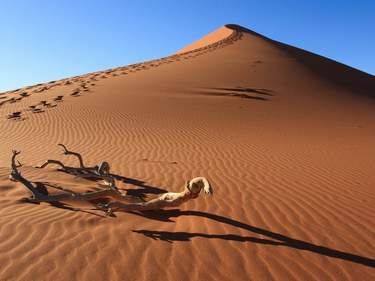
10 days / from 2600 USD
Ultimate Self Drive in Namibia
Explore Namibia on this epic, 10-day self drive trip. Highlights include the Namib, an ancient desert with towering dunes, dramatic mountains and colonial architecture at the waterfront. Additionally, you will visit the Himba people, discover Etosha National Park and more.

14 days / from 6677 USD
Epic Gondwana Adventure: Deserts, Ocean and Wilderness
Experience the best Namibia has to offer with a trip across the country, from the Kalahari to the Namib, the coast to Damaraland, ending off with an unforgettable time in the wildlife-mecca that is Etosha National Park.

8 days / from 16885 USD
Wilderness Safaris by Flight
Take convenient flights to explore the country's remote deserts, luxury lodges, safari camps, and iconic sights, from Sossusvlei's immense dunes to the rugged landscapes of Damaraland and the remote beauty of Kaokoveld.
International flights arrive at Windhoek’s Hosea Kutako International Airport , 42km east of the capital. The Johannesburg route to Namibia is more popular as you’ve a greater chance of getting a cheaper last-minute deal to Johannesburg provided you’re prepared to shop around online, scour newspaper ads and/or make more stops on the way. What’s more, there are numerous daily connections between Johannesburg and Windhoek. In contrast, the Frankfurt–Namibia route is only operated by Air Namibia , the country’s national carrier, and only offers one daily flight. Seats are generally more expensive and more heavily subscribed during the high season (July–Oct), as well as over the Christmas and New Year holiday period. That said, low-season prices are not particularly low. Generally, the further in advance you book, the cheaper the ticket – as with anywhere else in the world. However, you can cut costs by completing the last leg of the journey from South Africa by long-distance bus. It’s also possible to reach Namibia by bus from other countries in southern Africa.
Flights from the UK and Ireland
There are no direct flights from either the UK or Ireland to Namibia. The easiest route is via Johannesburg by one of several carriers from the UK. Virgin , British Airways and South African Airways offer daily direct overnight flights to Johannesburg, with the latter two offering onward connections via their partner airlines, BA Comair and South African Express , respectively. Fares from the UK (generally Heathrow) are inevitably pricier in high season. A slightly longer route, but also with only one stop, now operates four times a week with Qatar Airways via Doha, at competitive rates. Cheaper options are available if you are prepared to travel more circuitous routes with two stops, on less popular airlines (such as Ethiopian Airlines via Addis Ababa), which also involve longer layovers.
Travelling from Ireland, you can either transfer in London or in one of the other major European cities that have carriers operating flights to Johannesburg, such as Air France in Paris, or KLM in Amsterdam. Alternatively, there are cheap flights from Dublin to Frankfurt, where you can connect with the Air Namibia flight to Windhoek.
Flights from the US and Canada
None of the US or Canadian carriers offers direct flights to Namibia, though several US cities, such as New York (just under 15hr) and Atlanta (just over 15hr), have direct flights to Johannesburg, either with US carriers or with South African Airways. Since Canada has no direct flights to South Africa, the best bet is to connect with a US carrier in the States that offers direct flights from there.
Flights from Australia and New Zealand
The most direct way to reach Namibia from Australia is to take one of the Qantas or SAA nonstop flights to Johannesburg from either Sydney (13hr) or Perth (around 11hr) and change there. From New Zealand the easiest route is via Sydney.
Flights within southern Africa
There are several daily direct flights to Windhoek from Johannesburg and Cape Town with Air Namibia and South African Airways, operated by South African Express, as well as with Comair, on behalf of British Airways. SAA and Air Namibia both operate daily flights to Walvis Bay from Johannesburg and from Cape Town. Air Namibia also offers nonstop connections with: Gaborone, Botswana; Luanda, Angola ; Lusaka, Zambia ; and Victoria Falls, Zimbabwe .
Overland by car
The main entry points for vehicles from South Africa are on the B1 at Noordoewer (the Cape Town route), and at Ariamsvlei on the B3 (the Johannesburg route); both borders are open 24 hours. From southern Botswana the Trans Kalahari Highway enters Namibia at Buitepos, 315km east of Windhoek; travelling from northern Botswana , the main border posts are at Ngoma and Mohembo, both in the Zambezi Region. The Wenela Bridge across the Zambezi at Katima Mulilo – usually shortened to Katima – hosts the main border post with Zambia , whereas Oshikango is the main entry point from Angola . There are several other border crossings into Namibia, from South Africa and Botswana in particular, often at the end of a dusty road with more limited opening times.
If you’re driving to Namibia from one of these neighbouring countries, border procedures are fairly straightforward, though if you are not driving a Namibian-registered vehicle you will need to pay road tax, which allows you to bring your vehicle into the country for a maximum of three months. If coming for business, you’ll face additional charges. What’s more, if you are driving a rental car, then you’ll need to have arranged that with the company beforehand at extra cost, and have the papers handy to prove you have their permission to take it across the border.
Entry requirements
If you are a visitor from Western Europe, including the UK and Ireland, or from the US, Canada, New Zealand, Australia or South Africa, you do not need a visa to enter Namibia. Otherwise you should check with the Namibian diplomatic mission in your country. Even if a visa is not necessary, you do need a passport valid for six months after the entry date with at least two blank pages for stamps, and you should be able to show proof of onward travel (by air or bus), though this is unlikely to be requested. On arrival in Namibia your passport will be stamped for up to ninety days; visa extensions can be obtained from the Ministry of Home Affairs and Immigration in Windhoek, on the corner of Kasino Street and Independence Avenue.
You've made it to Namibia, but what next? You'll find the answer to that question and inspiration for the trip ahead in our Namibia itineraries . Planning to explore Africa further? Check out our South Africa itineraries .
The Rough Guides to Namibia and related travel guides
In-depth, easy-to-use travel guides filled with expert advice.
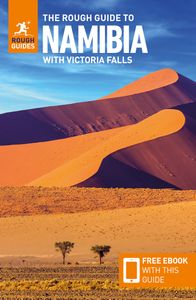
Travel advice for Namibia
From travel safety to visa requirements, discover the best tips for traveling to Namibia
- Eating and drinking in Namibia
- Getting around Namibia: Transportation Tips
- Going on safari
- Sports and Outdoor activities in Namibia
- Travel Health Namibia
- Travel Tips Namibia for planning and on the go
Find even more inspiration here

- Travel Tips
written by Rough Guides Editors
updated 07.05.2024
Ready to travel and discover Namibia?
Get support from our local experts for stress-free planning & worry-free travels.
- Where to stay
- Travel advice
Namibia Travel Restrictions
Traveler's COVID-19 vaccination status
Traveling from the United States to Namibia
Open for vaccinated visitors
COVID-19 testing
Not required
Not required for vaccinated visitors
Restaurants
Not required in public spaces and public transportation.
Ready to travel?
Find flights to namibia, find stays in namibia, explore more countries on travel restrictions map, destinations you can travel to now, dominican republic, netherlands, philippines, puerto rico, switzerland, united arab emirates, united kingdom, know when to go.
Sign up for email alerts as countries begin to open - choose the destinations you're interested in so you're in the know.
Can I travel to Namibia from the United States?
Most visitors from the United States, regardless of vaccination status, can enter Namibia.
Can I travel to Namibia if I am vaccinated?
Fully vaccinated visitors from the United States can enter Namibia without restrictions.
Can I travel to Namibia without being vaccinated?
Unvaccinated visitors from the United States can enter Namibia without restrictions.
Do I need a COVID test to enter Namibia?
Visitors from the United States are not required to present a negative COVID-19 PCR test or antigen result upon entering Namibia.
Can I travel to Namibia without quarantine?
Travelers from the United States are not required to quarantine.
Do I need to wear a mask in Namibia?
Mask usage in Namibia is not required in public spaces and public transportation.
Are the restaurants and bars open in Namibia?
Restaurants in Namibia are open. Bars in Namibia are .
Security Alert May 17, 2024
Worldwide caution, update may 10, 2024, information for u.s. citizens in the middle east.
- Travel Advisories |
- Contact Us |
- MyTravelGov |
Find U.S. Embassies & Consulates
Travel.state.gov, congressional liaison, special issuance agency, u.s. passports, international travel, intercountry adoption, international parental child abduction, records and authentications, popular links, travel advisories, mytravelgov, stay connected, legal resources, legal information, info for u.s. law enforcement, replace or certify documents.
Share this page:
Namibia Travel Advisory
Travel advisory november 27, 2023, namibia - level 2: exercise increased caution.
Last Update: Reissued with updates to crime.
Exercise increased caution in Namibia due to crime .
Country Summary : Petty crime, such as pickpocketing, purse snatching, and "smash-and-grab" attacks on vehicles, is increasingly common, and these can violently escalate into robberies and muggings. There is a higher risk of crime in the central business districts of major cities after dark.
Read the country information page for additional information on travel to Namibia.
If you decide to travel to Namibia:
- Avoid walking alone, especially after dark.
- Do not display large amounts of cash or other valuables.
- Keep car doors locked and windows shut at all times.
- Be cautious of people appearing to request assistance by the side of the road.
- Use ATMs located in well-lit public places or inside a bank or other business and be cautious of anyone offering assistance in using the ATM.
- Always carry a copy of your U.S. passport and Namibian visa or entry stamp (if applicable). Keep original documents in a secure location.
- Enroll in the Smart Traveler Enrollment Program ( STEP ) to receive Alerts and make it easier to locate you in an emergency.
- Follow the Department of State on Facebook and X .
- Review the Country Security Report for Namibia.
- Prepare a contingency plan for emergency situations. Review the Traveler’s Checklist
- Visit the CDC page for the latest Travel Health Information related to your travel.
Travel Advisory Levels
Assistance for u.s. citizens, namibia map, search for travel advisories, external link.
You are about to leave travel.state.gov for an external website that is not maintained by the U.S. Department of State.
Links to external websites are provided as a convenience and should not be construed as an endorsement by the U.S. Department of State of the views or products contained therein. If you wish to remain on travel.state.gov, click the "cancel" message.
You are about to visit:
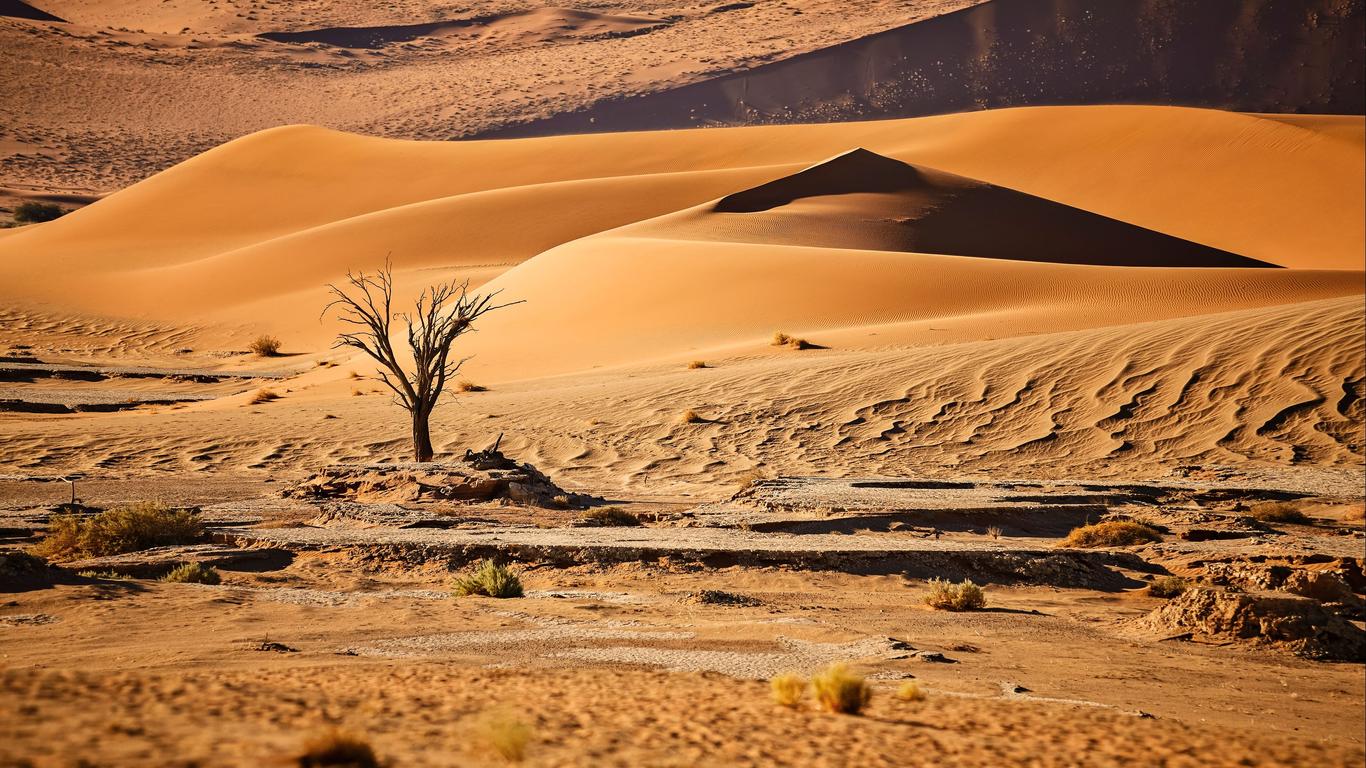
Find cheap flights to Namibia from C$ 1,129
This is the cheapest one-way flight price found by a kayak user in the last 72 hours by searching for a flight from canada to namibia departing on 3/11. fares are subject to change and may not be available on all flights or dates of travel. click the price to replicate the search for this deal., search hundreds of travel sites at once for deals on flights to namibia.
Save 21% or more Compare multiple travel sites with one search.
Track prices Not ready to book? Create a price alert for when prices drop.
Free to use There are no hidden charges or fees.
Filter your deals Choose cabin class, free Wi-Fi and more.
Good to know
Faqs - booking namibia flights, how long is the flight to namibia.
An average direct flight from Canada to Namibia takes 36h 28m, covering a distance of 20820 km. The most popular route is Montreal - Windhoek with an average flight time of 31h 25m.
What is the cheapest flight to Namibia?
The cheapest ticket to Namibia from Canada found in the last 72 hours was C$ 1,384. The most popular route is Montreal Pierre Elliott Trudeau Intl to Windhoek Hosea Kutako Intl and the cheapest round-trip airline ticket found on this route in the last 72 hours was C$ 1,384.
How does KAYAK’s flight Price Forecast tool help me choose the right time to buy?
KAYAK’s flight Price Forecast tool uses historical data to determine whether the price for a given destination and date is likely to change within 7 days, so travellers know whether to wait or book now.
Top tips for finding cheap flights to Namibia
- Enter your preferred departure airport and travel dates into the search form above to unlock the latest Namibia flight deals.
Top 3 airlines flying to Namibia
I was a good, but long trip. The airline did a good job. I would use them again.
The gate was changed at the very last moment and no one informed us. The flight was one hour late and the screen broken, the remote control not working. One toilet was out of order . the other toilets were also not totally functioning, because the washbasin was plugged and the water couldn't flow away.
Flight was smooth but unnecessary long because we had to refuel at FCO Rome. Air hostesses service and response to call light could be better. Both planes were old with broken seat arms and toilets. Why Africans had to be given the farthest Gates is what baffles me and why we have to pay for Aisle seats I found really strange. Is there ever an end to ripping people off even after paying over $2300 for one seat.
Same but worse than international. The inter African flights are worse.
The entertainment (movies) blockbuster and classics never change. I am a frequent Ethiopian flyer and this should be addressed. Not much changed from my summer flight and my December flight. It is annoying - surely you can update the selections more often. Same with food options. It becomes extremely boring to be offered the same exact meals from Washington to Addis to Maputo every trip, each time. AS
Entertainment was very poor. Couldn’t watch anything. Ear pieces were the wrong type .
The check in staff was amazing. Best customer service! The plane was old! My entertainment on the first flight didn't work at all, in my seat or in the seat next to me. The bathroom doors were old and troublesome. One of the bathrooms, the whole sink panel was broken. Everything felt old and falling apart. The airline stewardesses were amazing and quite hospitable. When there were delays, they kept us well informed. Transit was GREAT! I wasn't sure how I would make it to my next flight in 1 1/2 hours but the security lines were short and efficient. The C gates in Addis Ababa were CROWDED! That whole space downstairs was too crowded and challenging to manuever. I usually fly Ethiopian within Africa and was interested to see how the experience would be intercontinental. Overall, I would choose it again if it was cheaper than Delta/Air France or Lufthansa/KLM. I wouldn't make it a first choice if the prices were the same because the planes are so old! The food and entertainment also weren't as good. Good selection of movies but as I mentioned, on the first flight they didn't work at all (I slept so it was okay) and the 2nd flight it was glitchy. All in all, I didn't hate it but it would be a first choice only if it's cheaper.
The wifi service was really poor I try to use it the service was extremely poor if that could be improved that will go a long way
The food really sucks And they really need to work on entertainment The movie selection is herendous .
Was so glad the the captain kept the air. It’s usually suffocating in there.
boarding needs to be streamlined load the back of the plane first
The most horrific experience we had with the airline that we had in our life Everything was substandard at best. For just one hot tea they charged 4 euros We paid for Lufthansa months in advance ,to get there they didn’t have us in record and after 4 and a half hours layover we almost we got one seat at the first row and one in the back of the plane On top of that our suitcase was seriously damaged and it’s unusable. Here we are halfway around the world in foreign language having to fix this on our vacation time Would you kindly and quickly resolve this matter
Try to humanize onboarding and take AI out. It's embarrassing and useless
no kiosks to check in with- it’s 2024!!! the flight was so hot and uncomfortable - not sure if that’s what caused a lady to faint during the flight but i was absolutely miserable.
Luggage took nearly 2 hours to come out. Terrible airport service in Malaga.
Air Canada from Edmonton to Toronto was disappointing but Lufthansa from Toronto to Frankfurt was excellent.
I ended up buying (for $340) "extra space" seats because I my flying partner was given a STY boarding pass, leading me to conclude that she was on standby and that we had to buy seats on the flight. I later learned that the flight was not sold out and that we could have gotten on as usual. To be honest, I felt swindled.
I'm Canadian. I have the unfortunate experience of pretty not having the choice to fly with them. THEY ARE TERRIBLE.
+ Clean, modern plane. - Despite the cabin had only 50% occupancy I was cramped in a row with 2 other people. Almost all other rows had only 1 person. I would have expected the airline to offer assistance other than a flight attendant to tell people in the back of the plane to find available seats. Next time I will not purchase an upgraded seat and hope I get my personal row for free.
Deplaning at Frankfurt required ck=limbing steep stairs with no provision for escalator or elevator.
Check in was horrendous! Economy took 2 hours before seeing an agent. Business class was 0.5 - 1 hour.
My baggage did not arrived with me. Took 3 days to get it after so may calls and follow up
Entertainment catalog certainly needs an upgrade to include better and latest content. Food was not good at all - they need to cook something edible. Five starts to the crew and on tim performance of British airways though!!
British Airways planes are too old verses other airlines, followed by luggage not turning up, with a customer service team unhelpful in trying to locate or send to hotel was appalling. 3 days without suitcases on a leg that flies 2 x daily.
To take off on time but warned about a possible delay by enail which was good
Seating space was crowded and I am a very small woman.
Terrible. The flight from Islamabad to London took 3 hours more then previously planned, I missed my connection to Chicago, and instead had to go New York, spend an extra day before arriving at my final destination. The return leg of the journey was similar. The connection time in Qatar was shrinked to less then an hour unannounced, I had to scramble to barely make it to my flight to Islamabad. Terrible experience, never using British airways again.
A little more legroom, and maybe a little bit of food
I was called up at the gate not knowing why and then handed over my passport and was told I was being upgraded from Premier economy to Business class and it was wonderful. I've never been upgraded before and it was such a pleasant experience.
It was nice and smooth from boarding to landing. Flight crew was wonderful and very professional.
Book Cheap Namibia Plane Tickets
Recent round-trip flight deals, search by stops, search by airline, search by price, recent one-way flight deals, flights to namibia, cabin classes:, browse origins:.
- Flights »
Browse destinations:
- Worldwide »
You are using an outdated browser. Upgrade your browser today or install Google Chrome Frame to better experience this site.
Namibia Traveler View
Travel health notices, vaccines and medicines, non-vaccine-preventable diseases, stay healthy and safe.
- Packing List
After Your Trip
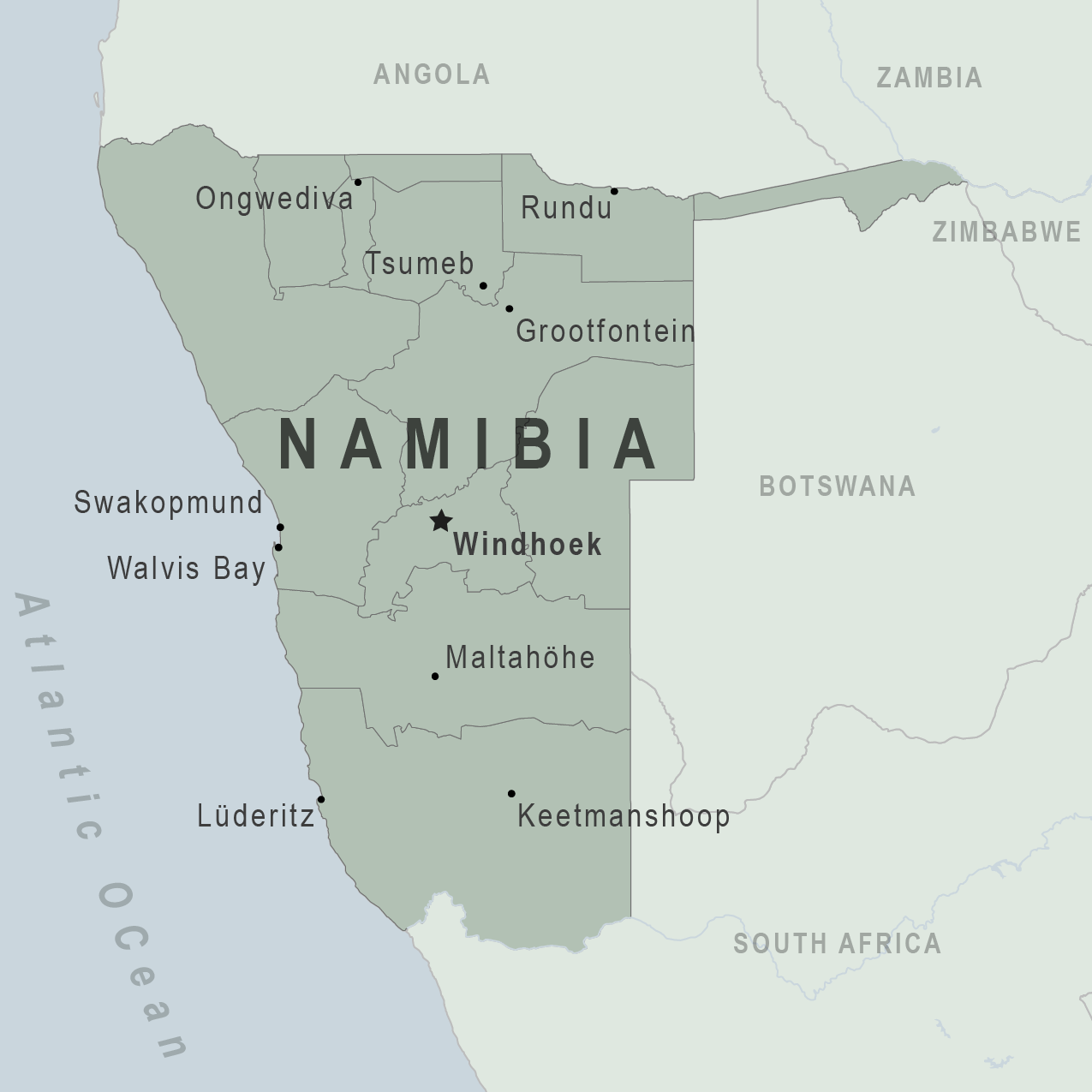
There are no notices currently in effect for Namibia.
⇧ Top
Check the vaccines and medicines list and visit your doctor at least a month before your trip to get vaccines or medicines you may need. If you or your doctor need help finding a location that provides certain vaccines or medicines, visit the Find a Clinic page.
Routine vaccines
Recommendations.
Make sure you are up-to-date on all routine vaccines before every trip. Some of these vaccines include
- Chickenpox (Varicella)
- Diphtheria-Tetanus-Pertussis
- Flu (influenza)
- Measles-Mumps-Rubella (MMR)
Immunization schedules
All eligible travelers should be up to date with their COVID-19 vaccines. Please see Your COVID-19 Vaccination for more information.
COVID-19 vaccine
Hepatitis A
Recommended for unvaccinated travelers one year old or older going to Namibia.
Infants 6 to 11 months old should also be vaccinated against Hepatitis A. The dose does not count toward the routine 2-dose series.
Travelers allergic to a vaccine component or who are younger than 6 months should receive a single dose of immune globulin, which provides effective protection for up to 2 months depending on dosage given.
Unvaccinated travelers who are over 40 years old, immunocompromised, or have chronic medical conditions planning to depart to a risk area in less than 2 weeks should get the initial dose of vaccine and at the same appointment receive immune globulin.
Hepatitis A - CDC Yellow Book
Dosing info - Hep A
Hepatitis B
Recommended for unvaccinated travelers of all ages traveling to Namibia.
Hepatitis B - CDC Yellow Book
Dosing info - Hep B
CDC recommends that travelers going to certain areas of Namibia take prescription medicine to prevent malaria. Depending on the medicine you take, you will need to start taking this medicine multiple days before your trip, as well as during and after your trip. Talk to your doctor about which malaria medication you should take.
Find country-specific information about malaria.
Malaria - CDC Yellow Book
Considerations when choosing a drug for malaria prophylaxis (CDC Yellow Book)
Malaria information for Namibia.
Cases of measles are on the rise worldwide. Travelers are at risk of measles if they have not been fully vaccinated at least two weeks prior to departure, or have not had measles in the past, and travel internationally to areas where measles is spreading.
All international travelers should be fully vaccinated against measles with the measles-mumps-rubella (MMR) vaccine, including an early dose for infants 6–11 months, according to CDC’s measles vaccination recommendations for international travel .
Measles (Rubeola) - CDC Yellow Book
Rabid dogs are commonly found in Namibia. However, if you are bitten or scratched by a dog or other mammal while in Namibia, rabies treatment is often available.
Consider rabies vaccination before your trip if your activities mean you will be around dogs or wildlife.
Travelers more likely to encounter rabid animals include
- Campers, adventure travelers, or cave explorers (spelunkers)
- Veterinarians, animal handlers, field biologists, or laboratory workers handling animal specimens
- Visitors to rural areas
Since children are more likely to be bitten or scratched by a dog or other animals, consider rabies vaccination for children traveling to Namibia.
Rabies - CDC Yellow Book
Recommended for most travelers, especially those staying with friends or relatives or visiting smaller cities or rural areas.
Typhoid - CDC Yellow Book
Dosing info - Typhoid

Yellow Fever
Required for travelers ≥9 months old arriving from countries with risk for YF virus transmission; this includes >12-hour airport transits or layovers in countries with risk for YF virus transmission. 1
Yellow Fever - CDC Yellow Book
- Avoid contaminated water
Leptospirosis
How most people get sick (most common modes of transmission)
- Touching urine or other body fluids from an animal infected with leptospirosis
- Swimming or wading in urine-contaminated fresh water, or contact with urine-contaminated mud
- Drinking water or eating food contaminated with animal urine
- Avoid contaminated water and soil
Clinical Guidance
Schistosomiasis
- Wading, swimming, bathing, or washing in contaminated freshwater streams, rivers, ponds, lakes, or untreated pools.
Avoid bug bites
African tick-bite fever.
- Avoid Bug Bites
African Tick-bite fever
Chikungunya
- Mosquito bite
Crimean-Congo Hemorrhagic fever
- Tick bite
- Touching the body fluids of a person or animal infected with CCHF
- Mosquito bite
Leishmaniasis
- Sand fly bite
- Avoid animals
Rift Valley Fever
- Touching blood, body fluids, or tissue of infected livestock
Rift Valley fever
Airborne & droplet
- Breathing in air or accidentally eating food contaminated with the urine, droppings, or saliva of infected rodents
- Bite from an infected rodent
- Less commonly, being around someone sick with hantavirus (only occurs with Andes virus)
- Avoid rodents and areas where they live
- Avoid sick people
Tuberculosis (TB)
- Breathe in TB bacteria that is in the air from an infected and contagious person coughing, speaking, or singing.
Learn actions you can take to stay healthy and safe on your trip. Vaccines cannot protect you from many diseases in Namibia, so your behaviors are important.
Eat and drink safely
Food and water standards around the world vary based on the destination. Standards may also differ within a country and risk may change depending on activity type (e.g., hiking versus business trip). You can learn more about safe food and drink choices when traveling by accessing the resources below.
- Choose Safe Food and Drinks When Traveling
- Water Treatment Options When Hiking, Camping or Traveling
- Global Water, Sanitation and Hygiene | Healthy Water
- Avoid Contaminated Water During Travel
You can also visit the Department of State Country Information Pages for additional information about food and water safety.
Prevent bug bites
Bugs (like mosquitoes, ticks, and fleas) can spread a number of diseases in Namibia. Many of these diseases cannot be prevented with a vaccine or medicine. You can reduce your risk by taking steps to prevent bug bites.
What can I do to prevent bug bites?
- Cover exposed skin by wearing long-sleeved shirts, long pants, and hats.
- Use an appropriate insect repellent (see below).
- Use permethrin-treated clothing and gear (such as boots, pants, socks, and tents). Do not use permethrin directly on skin.
- Stay and sleep in air-conditioned or screened rooms.
- Use a bed net if the area where you are sleeping is exposed to the outdoors.
What type of insect repellent should I use?
- FOR PROTECTION AGAINST TICKS AND MOSQUITOES: Use a repellent that contains 20% or more DEET for protection that lasts up to several hours.
- Picaridin (also known as KBR 3023, Bayrepel, and icaridin)
- Oil of lemon eucalyptus (OLE) or para-menthane-diol (PMD)
- 2-undecanone
- Always use insect repellent as directed.
What should I do if I am bitten by bugs?
- Avoid scratching bug bites, and apply hydrocortisone cream or calamine lotion to reduce the itching.
- Check your entire body for ticks after outdoor activity. Be sure to remove ticks properly.
What can I do to avoid bed bugs?
Although bed bugs do not carry disease, they are an annoyance. See our information page about avoiding bug bites for some easy tips to avoid them. For more information on bed bugs, see Bed Bugs .
For more detailed information on avoiding bug bites, see Avoid Bug Bites .
Stay safe outdoors
If your travel plans in Namibia include outdoor activities, take these steps to stay safe and healthy during your trip.
- Stay alert to changing weather conditions and adjust your plans if conditions become unsafe.
- Prepare for activities by wearing the right clothes and packing protective items, such as bug spray, sunscreen, and a basic first aid kit.
- Consider learning basic first aid and CPR before travel. Bring a travel health kit with items appropriate for your activities.
- If you are outside for many hours in heat, eat salty snacks and drink water to stay hydrated and replace salt lost through sweating.
- Protect yourself from UV radiation : use sunscreen with an SPF of at least 15, wear protective clothing, and seek shade during the hottest time of day (10 a.m.–4 p.m.).
- Be especially careful during summer months and at high elevation. Because sunlight reflects off snow, sand, and water, sun exposure may be increased during activities like skiing, swimming, and sailing.
- Very cold temperatures can be dangerous. Dress in layers and cover heads, hands, and feet properly if you are visiting a cold location.
Stay safe around water
- Swim only in designated swimming areas. Obey lifeguards and warning flags on beaches.
- Practice safe boating—follow all boating safety laws, do not drink alcohol if driving a boat, and always wear a life jacket.
- Do not dive into shallow water.
- Do not swim in freshwater in developing areas or where sanitation is poor.
- Avoid swallowing water when swimming. Untreated water can carry germs that make you sick.
- To prevent infections, wear shoes on beaches where there may be animal waste.
Schistosomiasis, a parasitic infection that can be spread in fresh water, is found in Namibia. Avoid swimming in fresh, unchlorinated water, such as lakes, ponds, or rivers.
Keep away from animals
Most animals avoid people, but they may attack if they feel threatened, are protecting their young or territory, or if they are injured or ill. Animal bites and scratches can lead to serious diseases such as rabies.
Follow these tips to protect yourself:
- Do not touch or feed any animals you do not know.
- Do not allow animals to lick open wounds, and do not get animal saliva in your eyes or mouth.
- Avoid rodents and their urine and feces.
- Traveling pets should be supervised closely and not allowed to come in contact with local animals.
- If you wake in a room with a bat, seek medical care immediately. Bat bites may be hard to see.
All animals can pose a threat, but be extra careful around dogs, bats, monkeys, sea animals such as jellyfish, and snakes. If you are bitten or scratched by an animal, immediately:
- Wash the wound with soap and clean water.
- Go to a doctor right away.
- Tell your doctor about your injury when you get back to the United States.
Consider buying medical evacuation insurance. Rabies is a deadly disease that must be treated quickly, and treatment may not be available in some countries.
Reduce your exposure to germs
Follow these tips to avoid getting sick or spreading illness to others while traveling:
- Wash your hands often, especially before eating.
- If soap and water aren’t available, clean hands with hand sanitizer (containing at least 60% alcohol).
- Don’t touch your eyes, nose, or mouth. If you need to touch your face, make sure your hands are clean.
- Cover your mouth and nose with a tissue or your sleeve (not your hands) when coughing or sneezing.
- Try to avoid contact with people who are sick.
- If you are sick, stay home or in your hotel room, unless you need medical care.
Avoid sharing body fluids
Diseases can be spread through body fluids, such as saliva, blood, vomit, and semen.
Protect yourself:
- Use latex condoms correctly.
- Do not inject drugs.
- Limit alcohol consumption. People take more risks when intoxicated.
- Do not share needles or any devices that can break the skin. That includes needles for tattoos, piercings, and acupuncture.
- If you receive medical or dental care, make sure the equipment is disinfected or sanitized.
Know how to get medical care while traveling
Plan for how you will get health care during your trip, should the need arise:
- Carry a list of local doctors and hospitals at your destination.
- Review your health insurance plan to determine what medical services it would cover during your trip. Consider purchasing travel health and medical evacuation insurance.
- Carry a card that identifies, in the local language, your blood type, chronic conditions or serious allergies, and the generic names of any medications you take.
- Some prescription drugs may be illegal in other countries. Call Namibia’s embassy to verify that all of your prescription(s) are legal to bring with you.
- Bring all the medicines (including over-the-counter medicines) you think you might need during your trip, including extra in case of travel delays. Ask your doctor to help you get prescriptions filled early if you need to.
Many foreign hospitals and clinics are accredited by the Joint Commission International. A list of accredited facilities is available at their website ( www.jointcommissioninternational.org ).
In some countries, medicine (prescription and over-the-counter) may be substandard or counterfeit. Bring the medicines you will need from the United States to avoid having to buy them at your destination.
Malaria is a risk in some parts of Namibia. If you are going to a risk area, fill your malaria prescription before you leave, and take enough with you for the entire length of your trip. Follow your doctor’s instructions for taking the pills; some need to be started before you leave.
Select safe transportation
Motor vehicle crashes are the #1 killer of healthy US citizens in foreign countries.
In many places cars, buses, large trucks, rickshaws, bikes, people on foot, and even animals share the same lanes of traffic, increasing the risk for crashes.
Be smart when you are traveling on foot.
- Use sidewalks and marked crosswalks.
- Pay attention to the traffic around you, especially in crowded areas.
- Remember, people on foot do not always have the right of way in other countries.
Riding/Driving
Choose a safe vehicle.
- Choose official taxis or public transportation, such as trains and buses.
- Ride only in cars that have seatbelts.
- Avoid overcrowded, overloaded, top-heavy buses and minivans.
- Avoid riding on motorcycles or motorbikes, especially motorbike taxis. (Many crashes are caused by inexperienced motorbike drivers.)
- Choose newer vehicles—they may have more safety features, such as airbags, and be more reliable.
- Choose larger vehicles, which may provide more protection in crashes.
Think about the driver.
- Do not drive after drinking alcohol or ride with someone who has been drinking.
- Consider hiring a licensed, trained driver familiar with the area.
- Arrange payment before departing.
Follow basic safety tips.
- Wear a seatbelt at all times.
- Sit in the back seat of cars and taxis.
- When on motorbikes or bicycles, always wear a helmet. (Bring a helmet from home, if needed.)
- Avoid driving at night; street lighting in certain parts of Namibia may be poor.
- Do not use a cell phone or text while driving (illegal in many countries).
- Travel during daylight hours only, especially in rural areas.
- If you choose to drive a vehicle in Namibia, learn the local traffic laws and have the proper paperwork.
- Get any driving permits and insurance you may need. Get an International Driving Permit (IDP). Carry the IDP and a US-issued driver's license at all times.
- Check with your auto insurance policy's international coverage, and get more coverage if needed. Make sure you have liability insurance.
- Avoid using local, unscheduled aircraft.
- If possible, fly on larger planes (more than 30 seats); larger airplanes are more likely to have regular safety inspections.
- Try to schedule flights during daylight hours and in good weather.
Medical Evacuation Insurance
If you are seriously injured, emergency care may not be available or may not meet US standards. Trauma care centers are uncommon outside urban areas. Having medical evacuation insurance can be helpful for these reasons.
Helpful Resources
Road Safety Overseas (Information from the US Department of State): Includes tips on driving in other countries, International Driving Permits, auto insurance, and other resources.
The Association for International Road Travel has country-specific Road Travel Reports available for most countries for a minimal fee.
Traffic flows on the left side of the road in Namibia.
- Always pay close attention to the flow of traffic, especially when crossing the street.
- LOOK RIGHT for approaching traffic.
Maintain personal security
Use the same common sense traveling overseas that you would at home, and always stay alert and aware of your surroundings.
Before you leave
- Research your destination(s), including local laws, customs, and culture.
- Monitor travel advisories and alerts and read travel tips from the US Department of State.
- Enroll in the Smart Traveler Enrollment Program (STEP) .
- Leave a copy of your itinerary, contact information, credit cards, and passport with someone at home.
- Pack as light as possible, and leave at home any item you could not replace.
While at your destination(s)
- Carry contact information for the nearest US embassy or consulate .
- Carry a photocopy of your passport and entry stamp; leave the actual passport securely in your hotel.
- Follow all local laws and social customs.
- Do not wear expensive clothing or jewelry.
- Always keep hotel doors locked, and store valuables in secure areas.
- If possible, choose hotel rooms between the 2nd and 6th floors.
Healthy Travel Packing List
Use the Healthy Travel Packing List for Namibia for a list of health-related items to consider packing for your trip. Talk to your doctor about which items are most important for you.
Why does CDC recommend packing these health-related items?
It’s best to be prepared to prevent and treat common illnesses and injuries. Some supplies and medicines may be difficult to find at your destination, may have different names, or may have different ingredients than what you normally use.
If you are not feeling well after your trip, you may need to see a doctor. If you need help finding a travel medicine specialist, see Find a Clinic . Be sure to tell your doctor about your travel, including where you went and what you did on your trip. Also tell your doctor if you were bitten or scratched by an animal while traveling.
If your doctor prescribed antimalarial medicine for your trip, keep taking the rest of your pills after you return home. If you stop taking your medicine too soon, you could still get sick.
Malaria is always a serious disease and may be a deadly illness. If you become ill with a fever either while traveling in a malaria-risk area or after you return home (for up to 1 year), you should seek immediate medical attention and should tell the doctor about your travel history.
For more information on what to do if you are sick after your trip, see Getting Sick after Travel .
Map Disclaimer - The boundaries and names shown and the designations used on maps do not imply the expression of any opinion whatsoever on the part of the Centers for Disease Control and Prevention concerning the legal status of any country, territory, city or area or of its authorities, or concerning the delimitation of its frontiers or boundaries. Approximate border lines for which there may not yet be full agreement are generally marked.
Other Destinations
If you need help finding travel information:
Message & data rates may apply. CDC Privacy Policy
File Formats Help:
- Adobe PDF file
- Microsoft PowerPoint file
- Microsoft Word file
- Microsoft Excel file
- Audio/Video file
- Apple Quicktime file
- RealPlayer file
- Zip Archive file
Exit Notification / Disclaimer Policy
- The Centers for Disease Control and Prevention (CDC) cannot attest to the accuracy of a non-federal website.
- Linking to a non-federal website does not constitute an endorsement by CDC or any of its employees of the sponsors or the information and products presented on the website.
- You will be subject to the destination website's privacy policy when you follow the link.
- CDC is not responsible for Section 508 compliance (accessibility) on other federal or private website.
- Skip to main content
- Skip to site information
Language selection
Help us to improve our website. Take our survey !
Traveller entry requirements
How to prepare for crossing the border into Canada
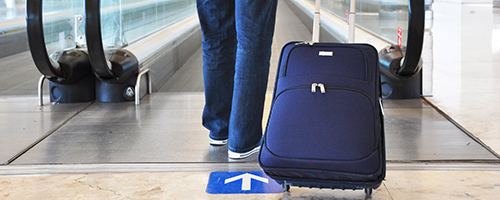
Services and information
Travel and identification documents for entering canada.
Acceptable documents, establishing your personal identity, your citizenship and other important information
Find out if you can enter Canada
Visas, Electronic Travel Authorizations and other documentation you may need to enter or transit through Canada
Visas, Electronic Travel Authorizations and other documentation you may need to enter or transit through Canada.
Information on what you can bring back to Canada, what to declare, duties and taxes, and personal exemptions
Airport arrival kiosks and eGates
Verify your identity and make a customs declaration at Canada’s major international airports
Directory of CBSA border offices and services across Canada
List of designated CBSA offices and service locations across Canada
Examining digital devices at the Canadian border
Your cell phones, tablets, laptops and any other digital device you are carrying can be examined when you when cross the border
Reporting requirements for private boaters
Options, exceptions, consequences for failing to report and more.
Reporting requirements for non-commercial aircraft
Landing private, company-owned or charter aircraft in Canada
Advance Declaration: Save time at the border
Use Advance Declaration in ArriveCAN to submit your customs and immigration declaration before flying into Canada
Cookies on GOV.UK
We use some essential cookies to make this website work.
We’d like to set additional cookies to understand how you use GOV.UK, remember your settings and improve government services.
We also use cookies set by other sites to help us deliver content from their services.
You have accepted additional cookies. You can change your cookie settings at any time.
You have rejected additional cookies. You can change your cookie settings at any time.
- Passports, travel and living abroad
- Travel abroad
- Foreign travel advice
Entry requirements
This advice reflects the UK government’s understanding of current rules for people travelling on a full ‘British citizen’ passport from the UK, for the most common types of travel.
The authorities in Namibia set and enforce entry rules. If you’re not sure how these requirements apply to you, contact the Namibian High Commission in the UK .
COVID-19 rules
There are no COVID-19 testing or vaccination requirements for travellers entering Namibia.
Passport validity requirements
To enter Namibia, your passport must have an ‘expiry date’ at least 6 months after the date you arrive. It must also have at least one blank page. If you’re travelling to South Africa, you will need an additional 2 blank pages.
Check with your travel provider that your passport and other travel documents meet requirements. Renew your passport if you need to.
You will be denied entry if you do not have a valid travel document or try to use a passport that has been reported lost or stolen.
Visa requirements
You can visit Namibia for up to 90 days without a visa. If you plan to work or volunteer, or if you want to stay longer, you must get a visa.
Applying for a visa
Apply through the Namibian High Commission in the UK .
Make sure you get your passport stamped.
Make sure the date on your entry stamp and the amount of time you have been given to stay is correct. Immigration officials will check these details when you leave Namibia.
The Namibian authorities could detain, arrest or fine you if you overstay or have an incorrect or missing entry stamp in your passport.
Travelling with children aged 17 and under
If you’re a parent travelling with children aged 17 and under, you must carry their:
- valid passport
- full birth certificate with both parents’ details (original or certified copy)
Namibian immigration officials will not accept an abridged (short) birth certificate. If your child was born in the UK, you can order a full unabridged birth certificate online .
If you’re a legal guardian and your name is not on the birth certificate, you will need to have documentation to prove it.
If you’re not a parent or legal guardian of children you’re travelling with, you must have an affidavit from their parents or guardians giving consent.
If a child is travelling with one parent or legal guardian, the other parent or legal guardian should give consent for travel in an affidavit.
Unaccompanied children must carry:
- a valid passport
- proof of consent from a parent or legal guardian in an affidavit
- a letter from their host giving the address where they’ll be staying
Contact the Namibian High Commission in the UK for more information.
Travelling with children through a South African airport
If you’re travelling with children through a South African airport, see South Africa travel advice for information about the documents you must carry.
Vaccination requirements
At least 8 weeks before your trip, check the vaccinations and certificates you need in TravelHealthPro’s Namibia guide .
Depending on your circumstances, this may include a yellow fever certificate.
Customs rules
There are strict rules about goods you can take into or out of Namibia . You must declare anything that may be prohibited or subject to tax or duty.
Related content
Is this page useful.
- Yes this page is useful
- No this page is not useful
Help us improve GOV.UK
Don’t include personal or financial information like your National Insurance number or credit card details.
To help us improve GOV.UK, we’d like to know more about your visit today. Please fill in this survey (opens in a new tab) .

Love Exploring
The Unusual Natural Wonders That Scientists Can't Explain
Posted: May 14, 2024 | Last updated: May 14, 2024
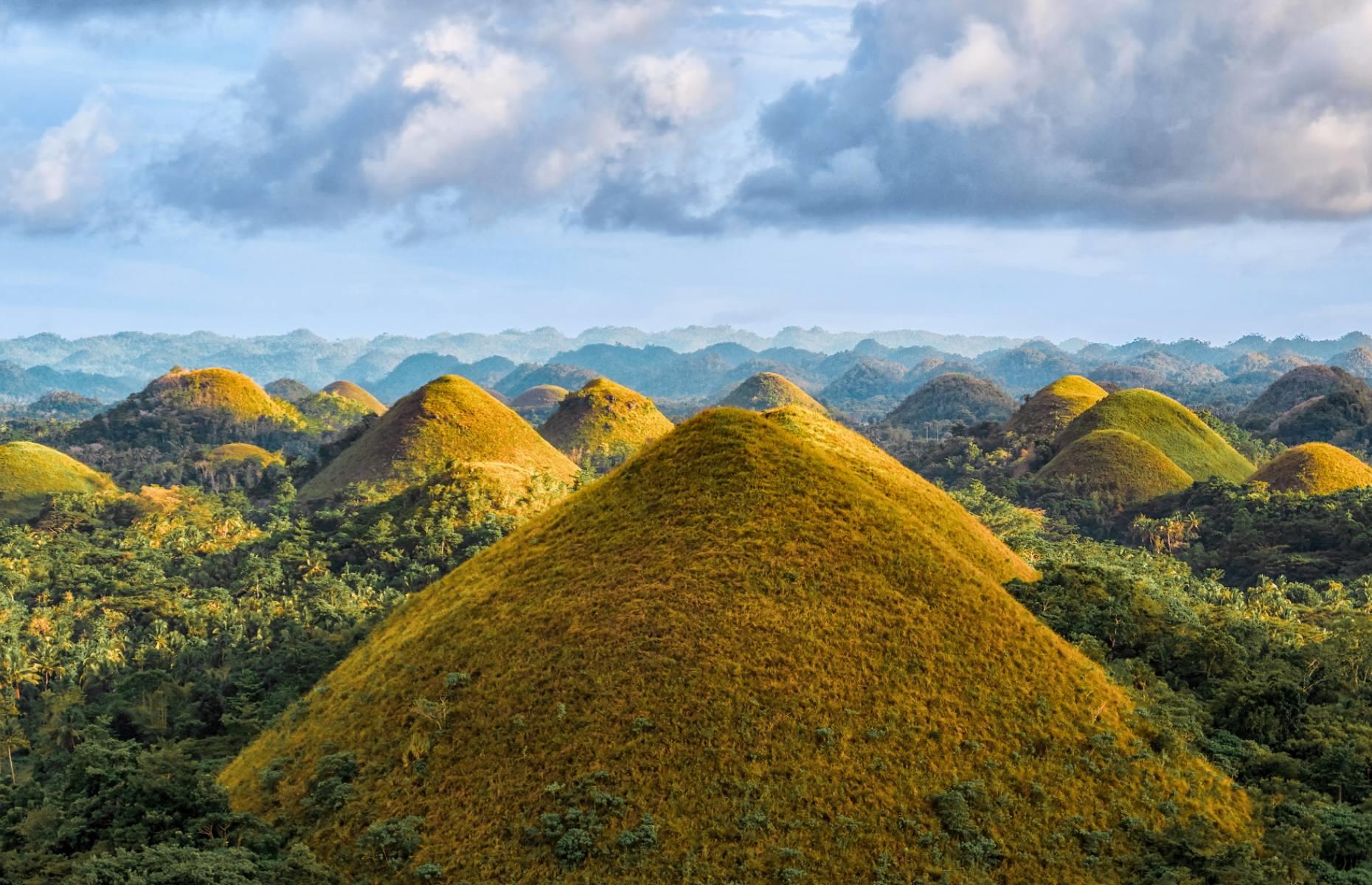
Mother Nature’s last great mysteries
Scientific advancements mean we now have rational explanations for many of the world’s amazing landscapes. But some mysterious places around the globe continue to perplex experts. From a perfectly semi-circular lakeshore in Canada to a polka-dotted patch of earth in Namibia and a bright blue spring in France with no apparent origin, these beguiling natural wonders remain unexplained.
Read on for more mysterious places around the globe, from a perfectly semi-circular lakeshore in Canada to a bright blue spring in France with no apparent origin...
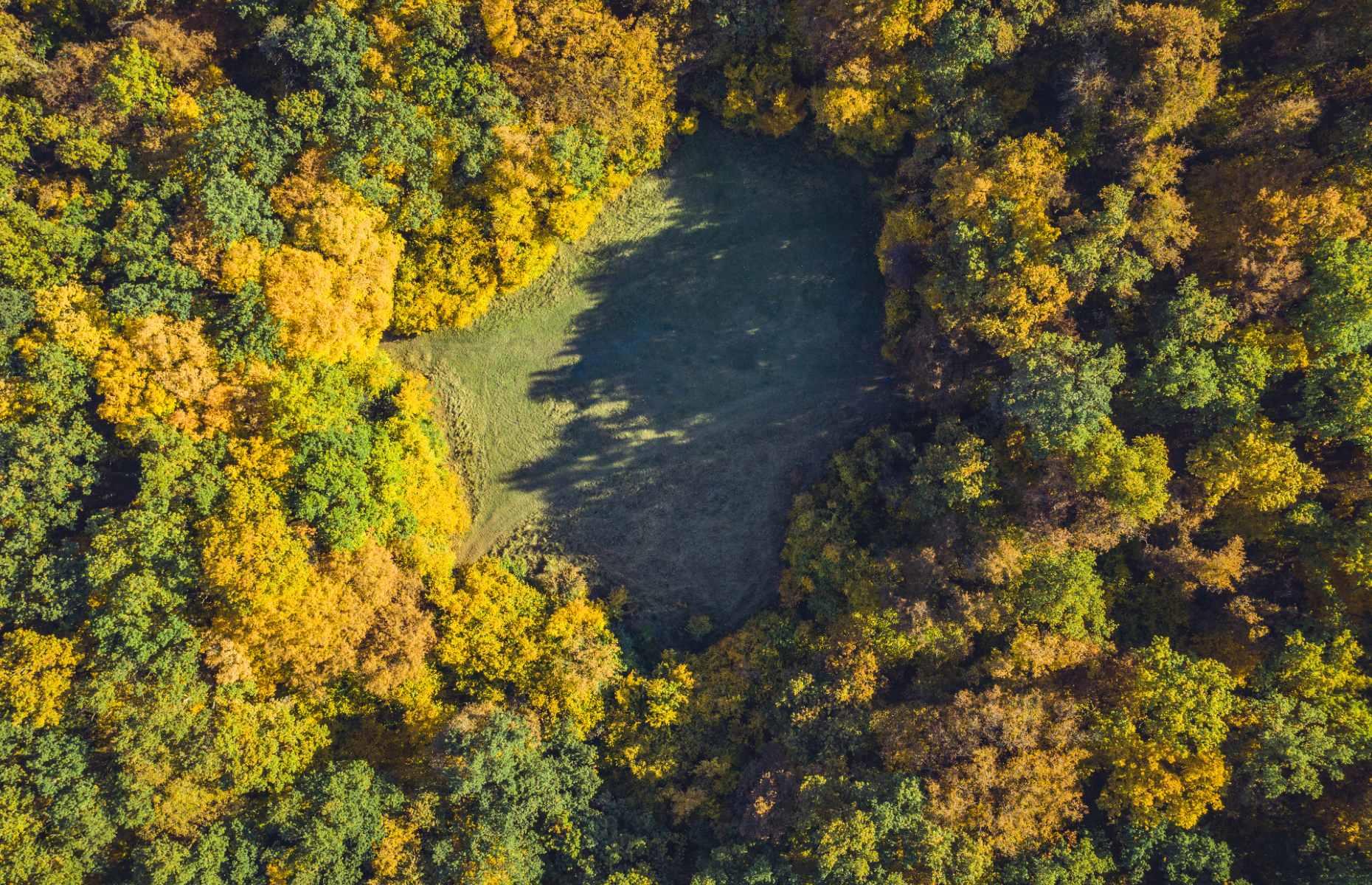
Hoia-Baciu Forest, Romania
Under the right circumstances any forest could feel spooky, but Hoia-Baciu in Transylvania definitely dials things up a notch. Filled with crooked trees and carpeted by an eerie mist, the area has been dubbed ‘the Bermuda Triangle of Romania’ since there have been many tales of people going missing and other strange occurrences here. Horror stories aside, there’s an even bigger puzzle even scientists can’t explain...
In the heart of the woodland there’s a near-perfect circular patch, known as ‘the Clearing’, where nothing grows – and no one knows why. Outside of the circle, trees grow in strange, twisted forms. Various scientists have taken soil samples, studied the plant life and tested for radiation here, but their results have not yielded an answer as to why this desolate patch exists. One thing’s not up for debate, though: this forest will send a chill down the spine of anyone who ventures in.
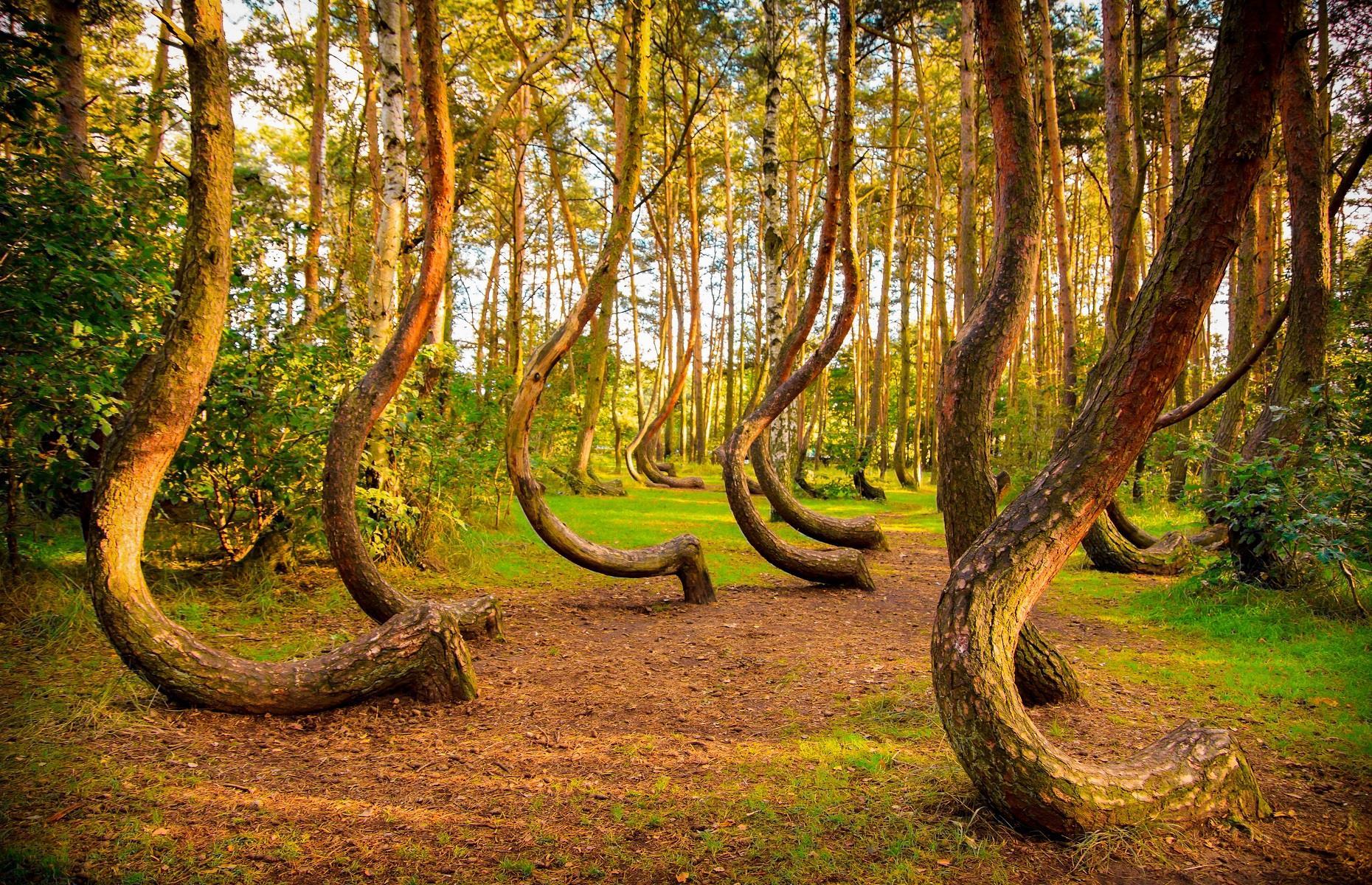
Crooked Forest, Poland
With its J-shaped tree trunks, the aptly named Crooked Forest is as baffling as it is beautiful. Located near the Polish city of Gryfino, it’s home to more than 400 pine trees believed to have been planted in the 1930s and each displaying a curved trunk. Stranger still, the vast majority of them bend in a northward direction. Arboriculturists (tree scientists) have debated how this otherworldly landscape came to be but so far no one has been able to explain it.
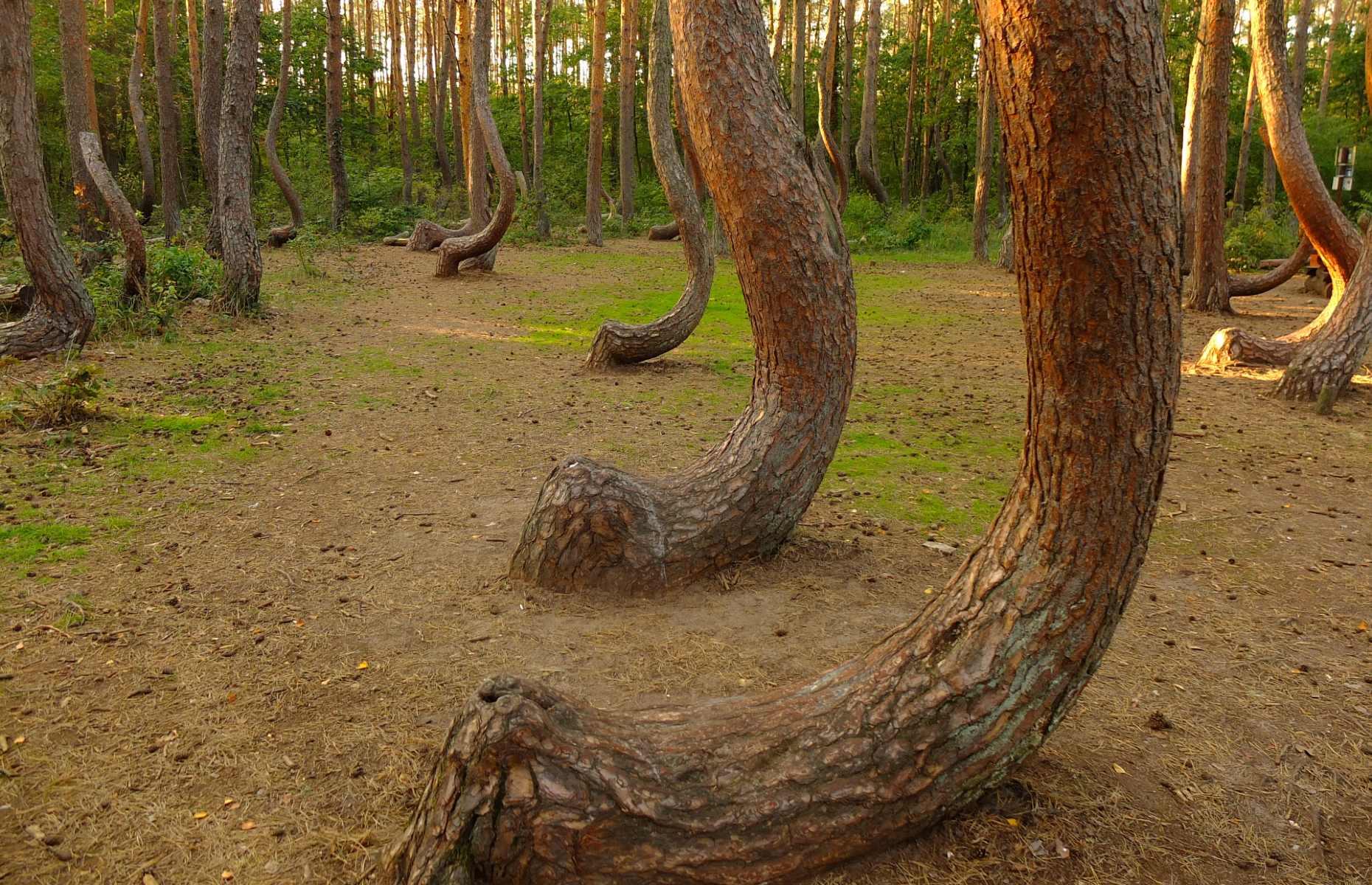
One of the more outlandish theories was that this area has a unique gravitational pull which caused the trees to bend – an idea that was quickly dismissed. Another, slightly more plausible, hypothesis is that the trees buckled under the weight of heavy snowfall, but a patch of straight-trunked trees nearby seems to disprove this. It has also been suggested that there could be a genetic reason, although the smoothness and similarity of the curves makes this unlikely. For now, the fairy-tale forest remains a total mystery.
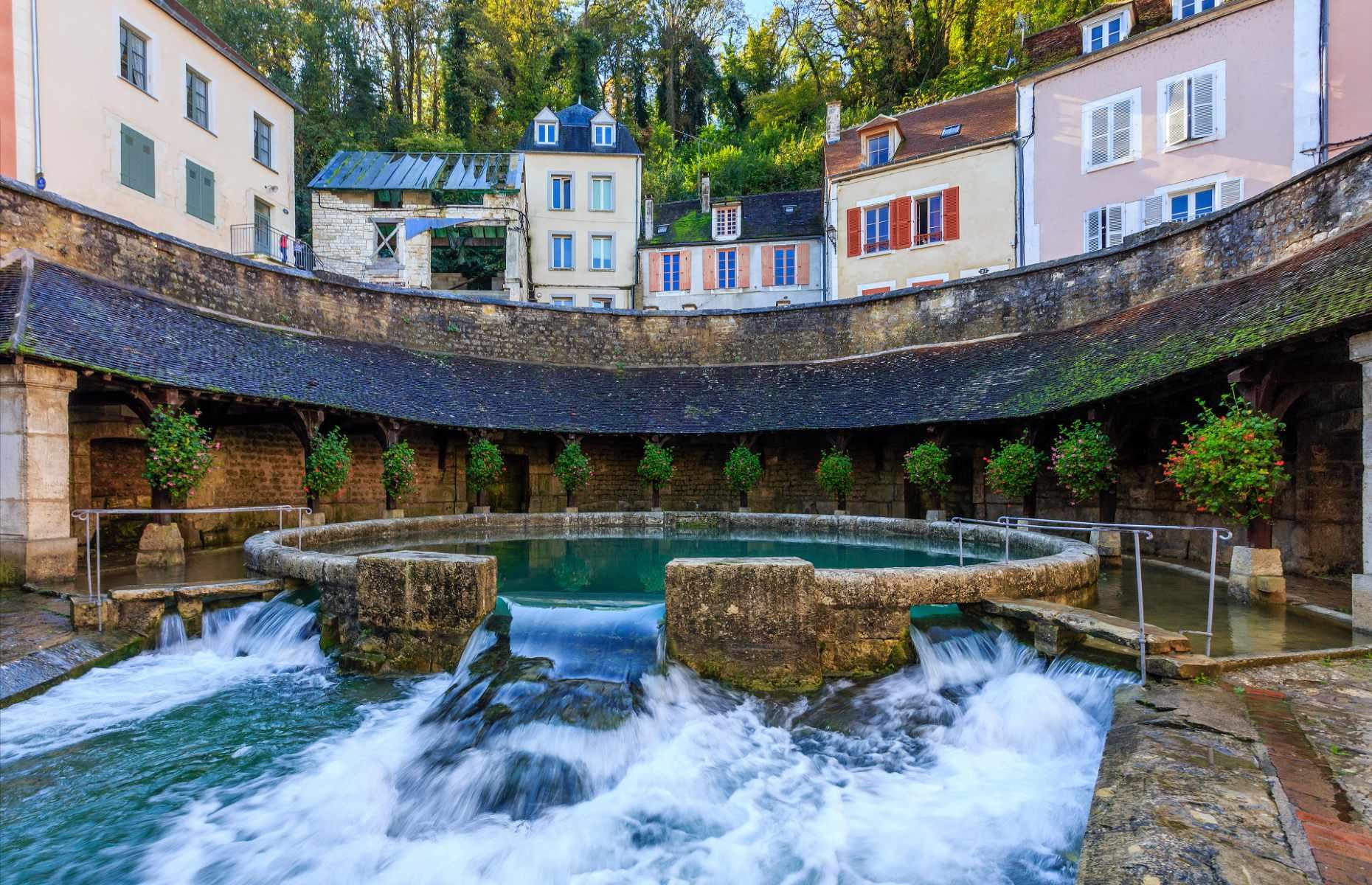
Fosse Dionne, France
Residents in the village of Tonnerre, in the heart of France’s Burgundy region, have been mystified by this bright blue spring for hundreds of years. The seemingly bottomless well gushes out around 311 liters of water per second, yet its source has never been discovered. Cue plenty of local legends. One says its depths are patrolled by a huge, deadly serpent, while another suggests it’s a portal to other worlds.
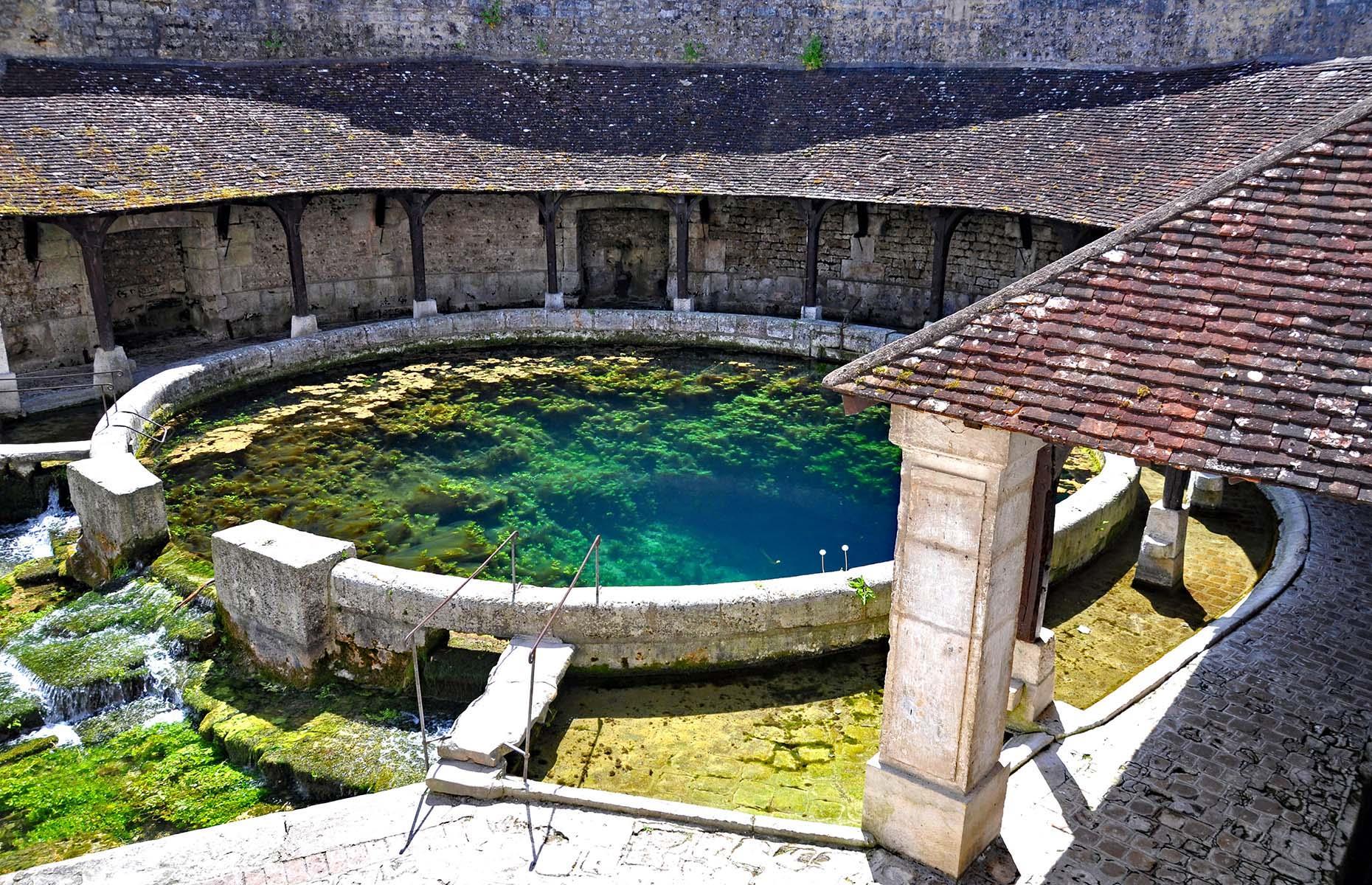
In 1974, two hardy divers descended into the pit in an attempt to find the water's origin, but died while attempting to navigate its narrow passages. More than 20 years later, another diver went down into the well and met the same sorry fate. In October 2019, professional diver Pierre-Éric Deseigne was hired by the town to explore the spring, filming as he went. He managed to descend some 1,214 feet underwater, further than anyone had ever been before. But, while his footage gave some indication of what it’s like down there, he still couldn’t locate the spring’s source.
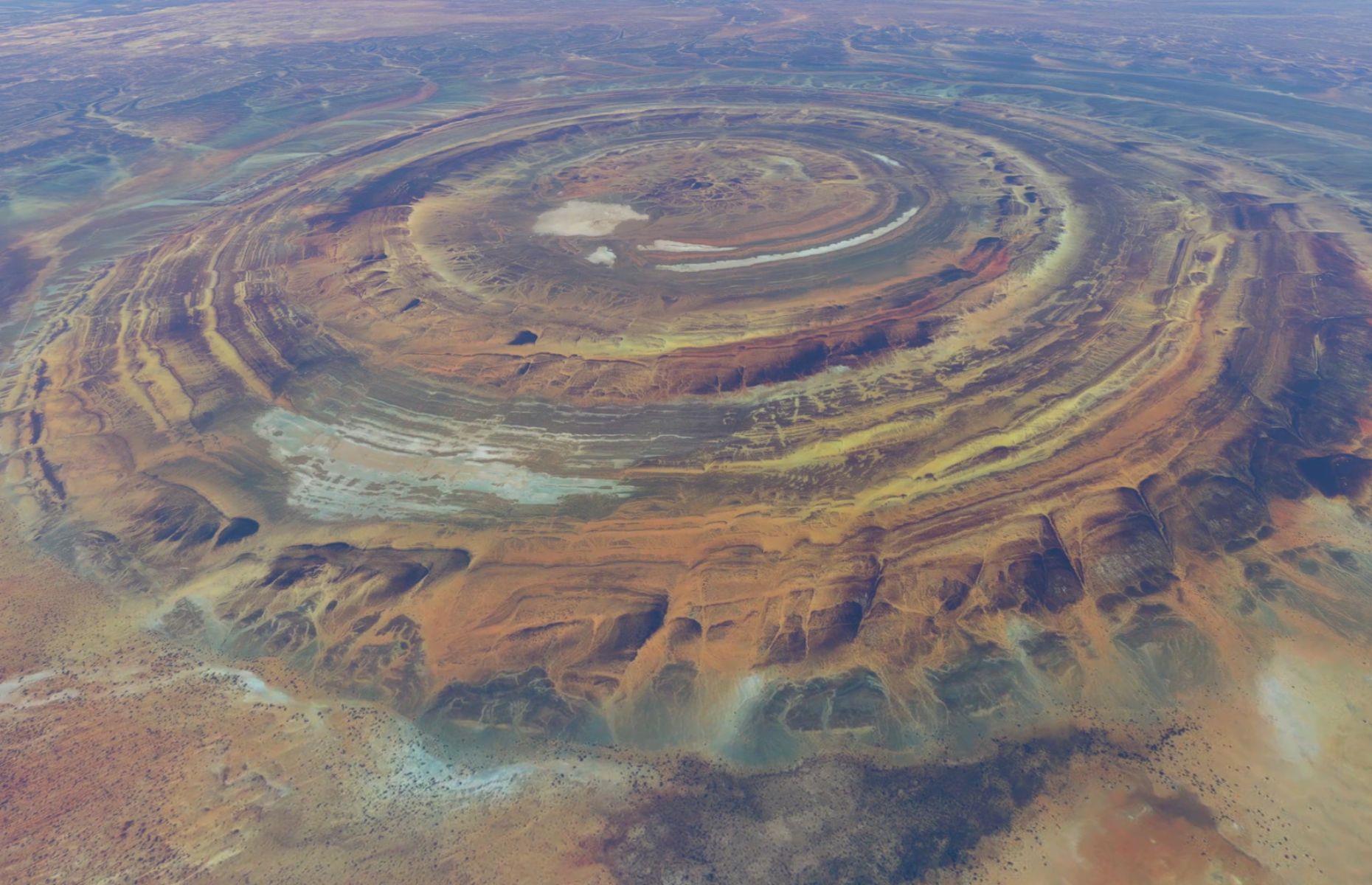
Richat Structure, Mauritania
This strange natural formation in the heart of the Sahara Desert only became widely known when we began sending humans into space. Dubbed Eye of the Sahara, because it appears to be gazing out to other planets, the Richat Structure was first captured on camera by astronauts on NASA’s Gemini IV mission in 1965. It’s thought that only a handful of local people previously knew of the geological oddity, which spans across a 25-mile region in Mauritania, northwest Africa.
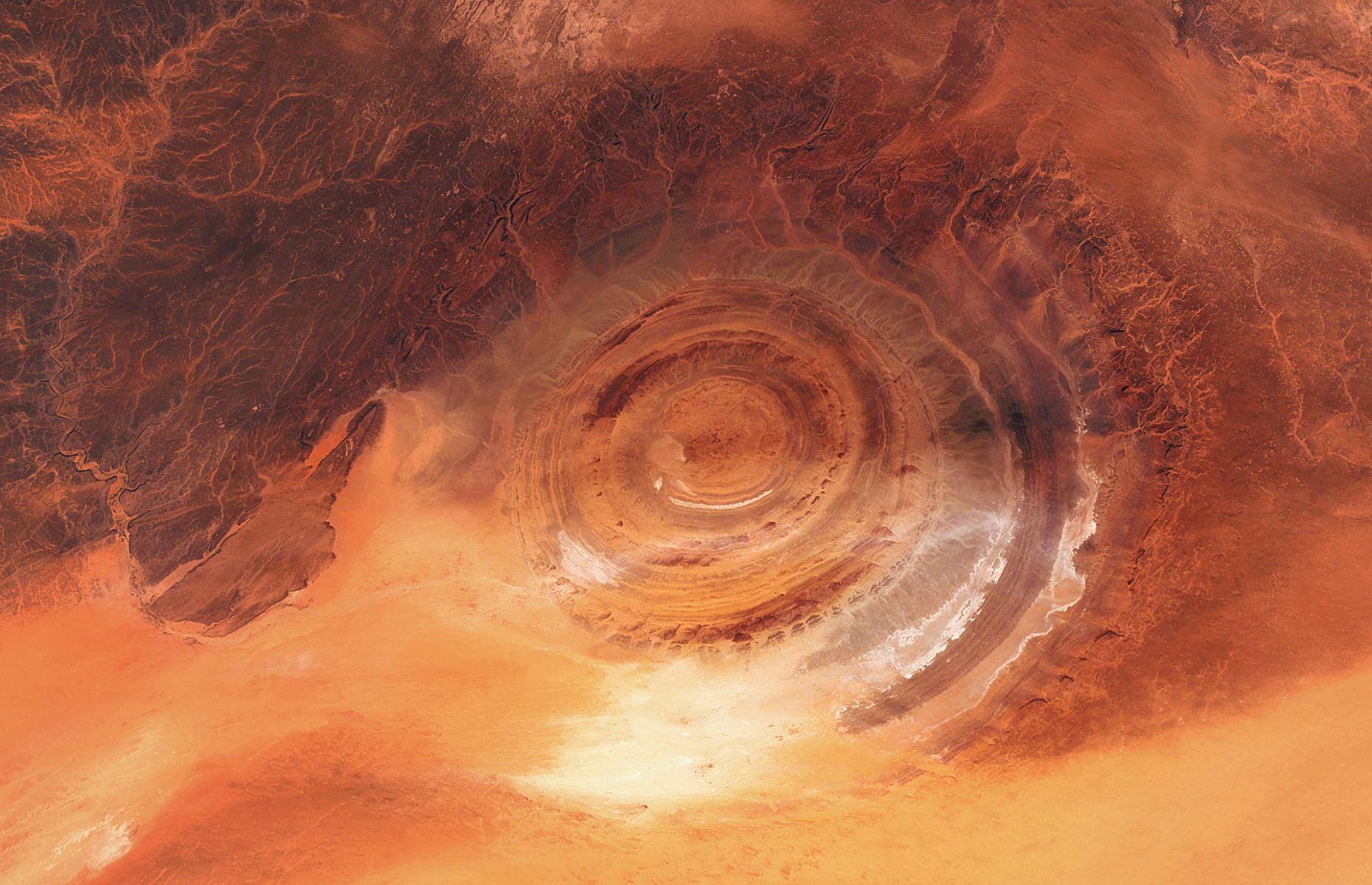
It was initially hypothesized that the natural wonder was created when a meteor crashed into Earth, but this idea was dismissed as there wasn’t enough melted rock in the area to show a collision. Today, the most prominent theory is that it was created more than 100 million years ago when the mega-continent of Pangaea was being forced apart. As the world’s tectonic plates shifted, molten rock pushed up to the surface but didn’t quite make it, resulting in the dome-like shape. Meanwhile, its concentric rings were created as different types of rock were eroded at different speeds.
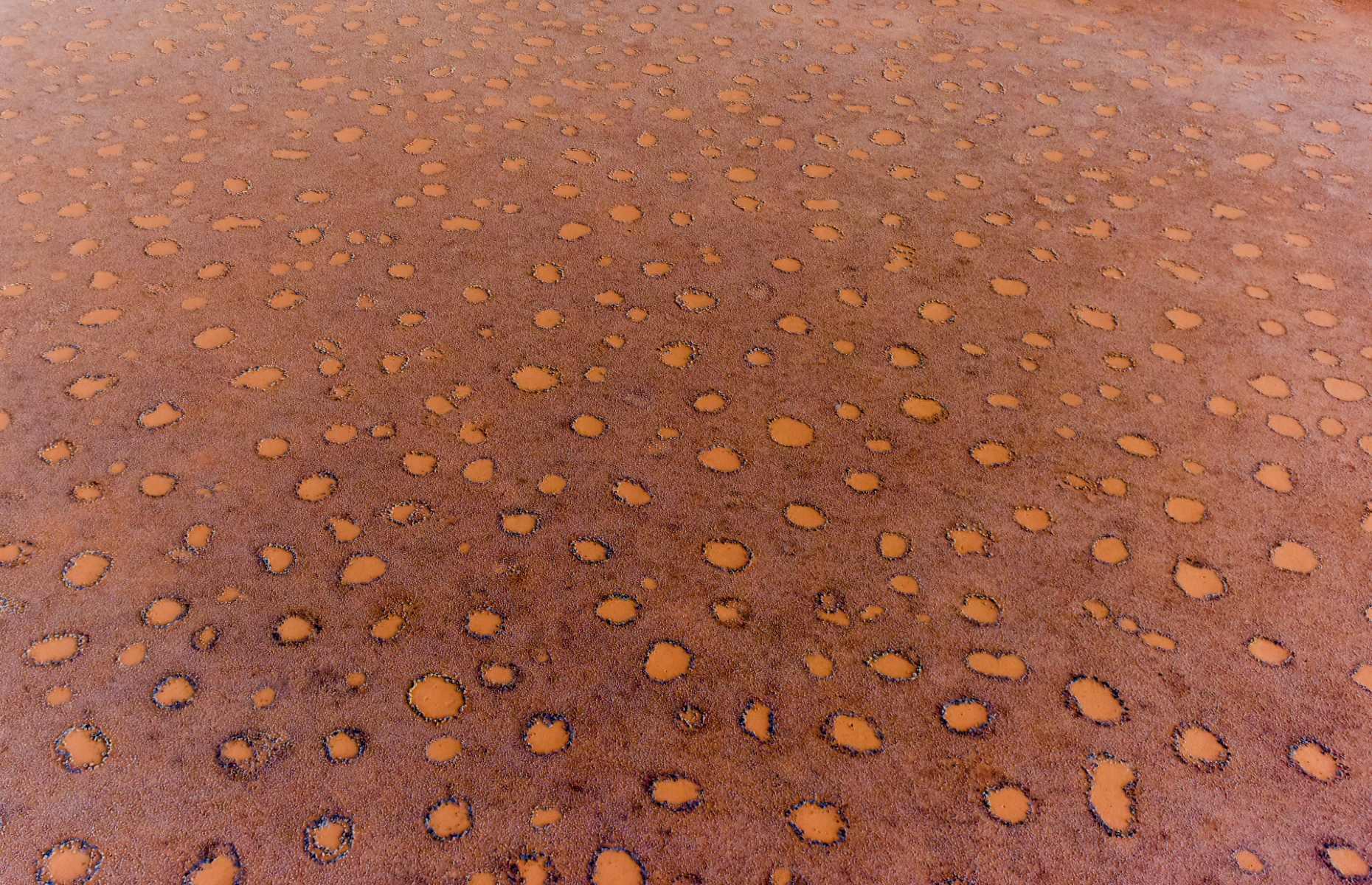
Fairy circles, Namibia
Seen from above, the circular markings on this grassy desert in Namibia look like a vast sheet of polka dots. For hundreds of years, researchers have been unable to determine the cause of the fairy circles, which vary from 10-65 feet in diameter and extend across hundreds of miles. Local folklore states they’re the footprints of gods or that they were created by the breath of an underground dragon. But science has struggled to find a conclusive answer.
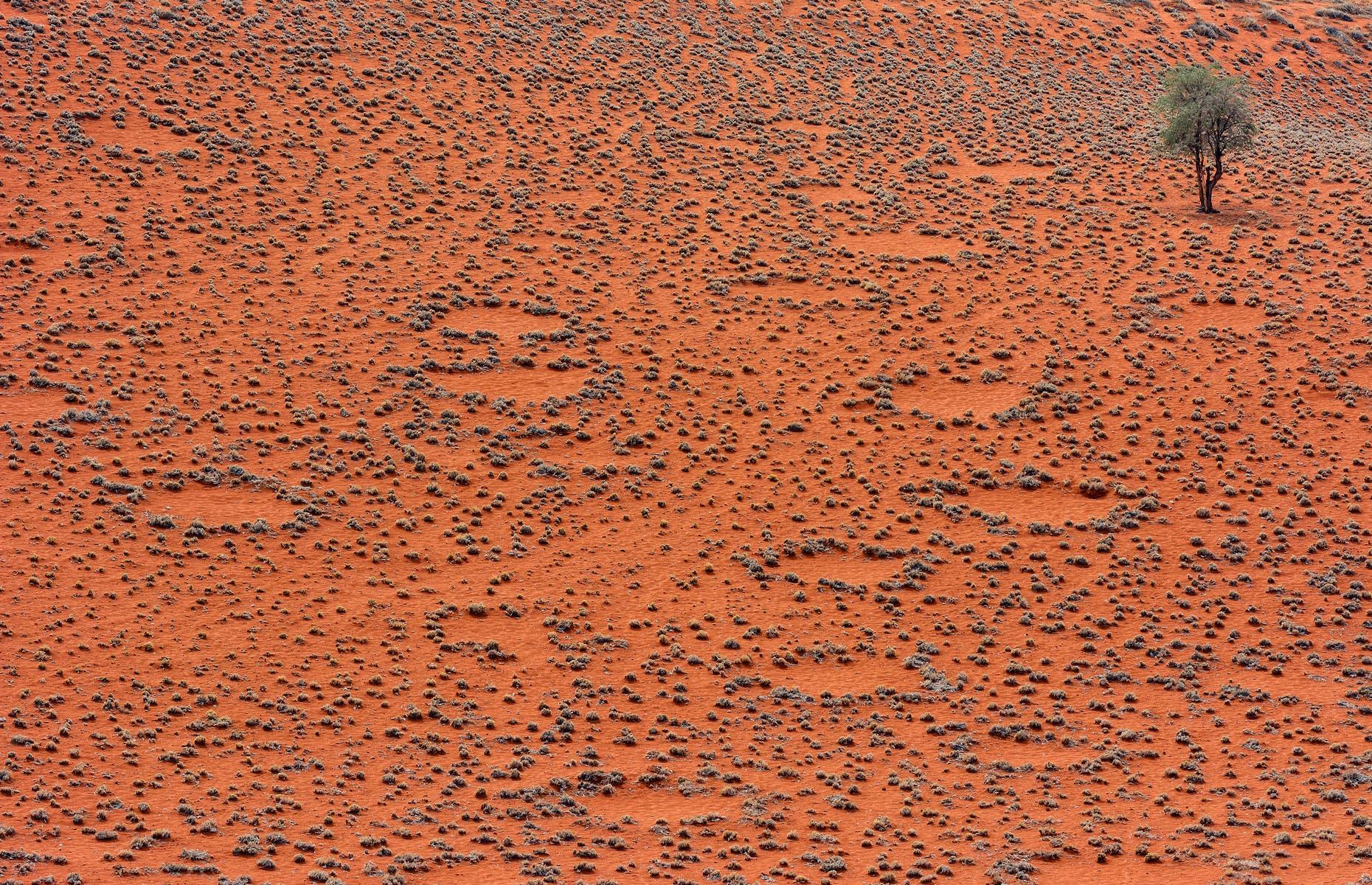
Fairy Circles, Namibia
One theory suggests that underground termites help to shape the circles, while another proposes that competition between different grasses in the desert is behind their formation. In 2021, a new study by researchers at the University of Pretoria argues that the distinctive markings are created as a plant releases toxic sap into the ground when it dies, stopping other plants from growing in these regions. The study’s authors noted that rising temperatures in Namibia may have fueled increased competition between these plants, causing more of them to die and creating more fairy circles.
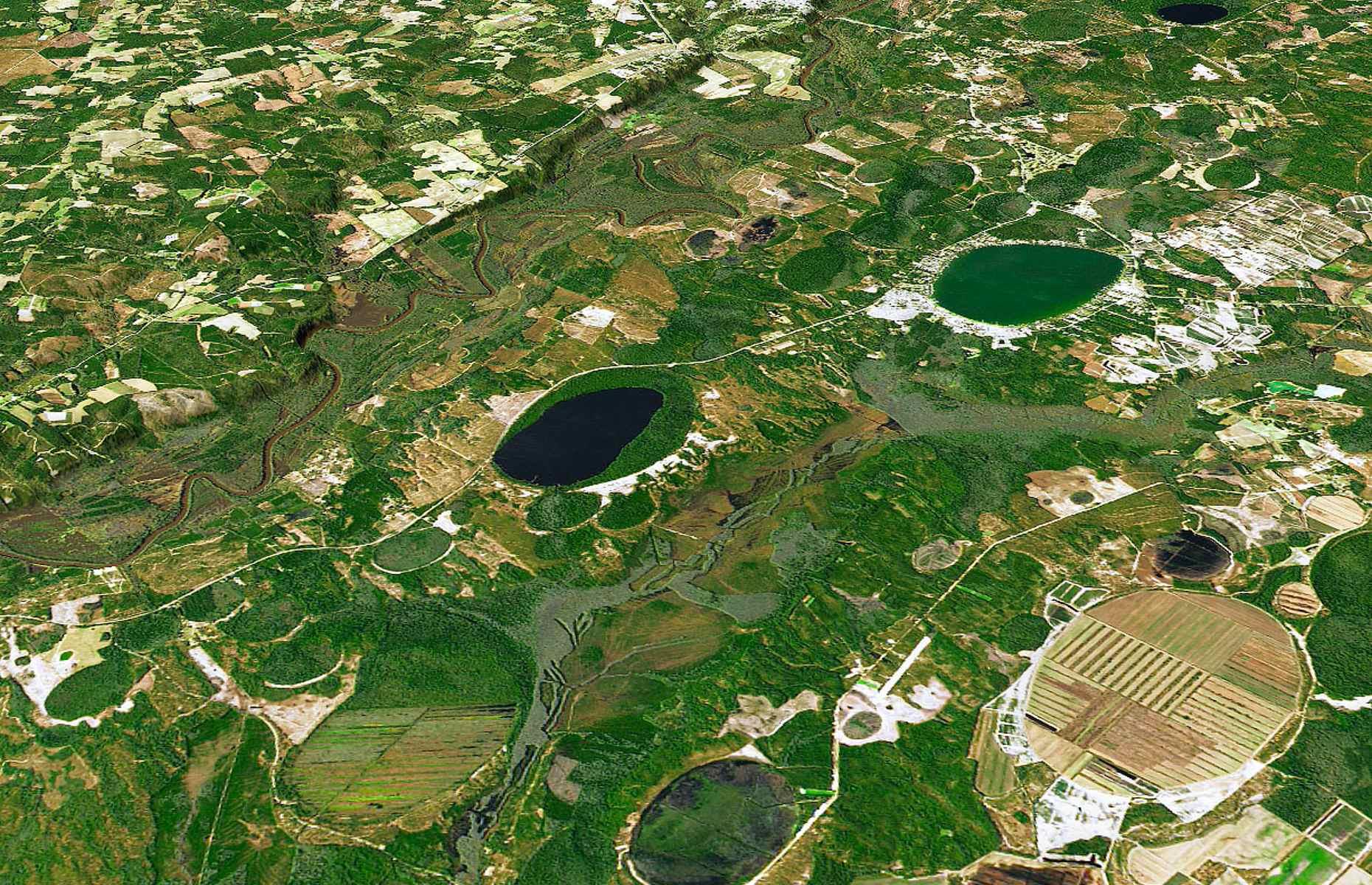
Carolina Bays, various states, USA
From the ground, the wetland- and lake-filled depressions that make up the Carolina Bays on America's East Coast don’t look particularly unusual. So it wasn’t until the 1930s – when aerial photographs were taken of America’s Atlantic coastline for the first time – that their geological oddity became apparent. Resembling a series of oval-shaped depressions, which tend to be found in clusters and are filled with either water or vegetation, these egg-shaped forms all face in exactly the same direction.
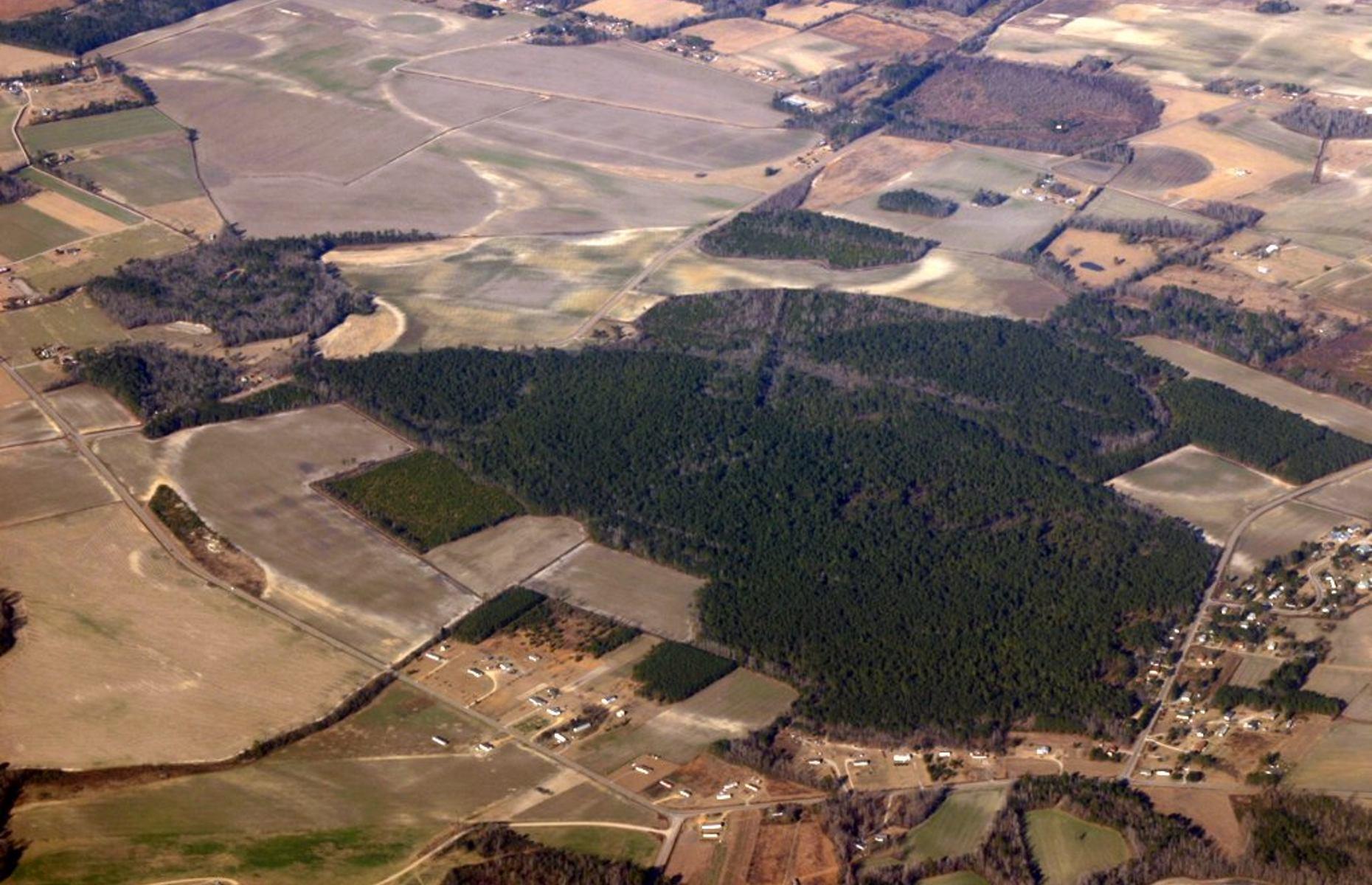
In the 1950s, scientists suggested that a meteor shower could have been responsible for their formation. But carbon-dating studies soon debunked this theory, revealing that the Carolina Bays were not formed at the same time, with some being tens of thousands of years apart. Another hypothesis states that, around 2.5 million years ago, strong southwesterly winds created currents on the surface of the ponds, which led them to deposit sediment on their north and southeastern sides. While this is considered the most likely answer, scientists still don’t know for sure.
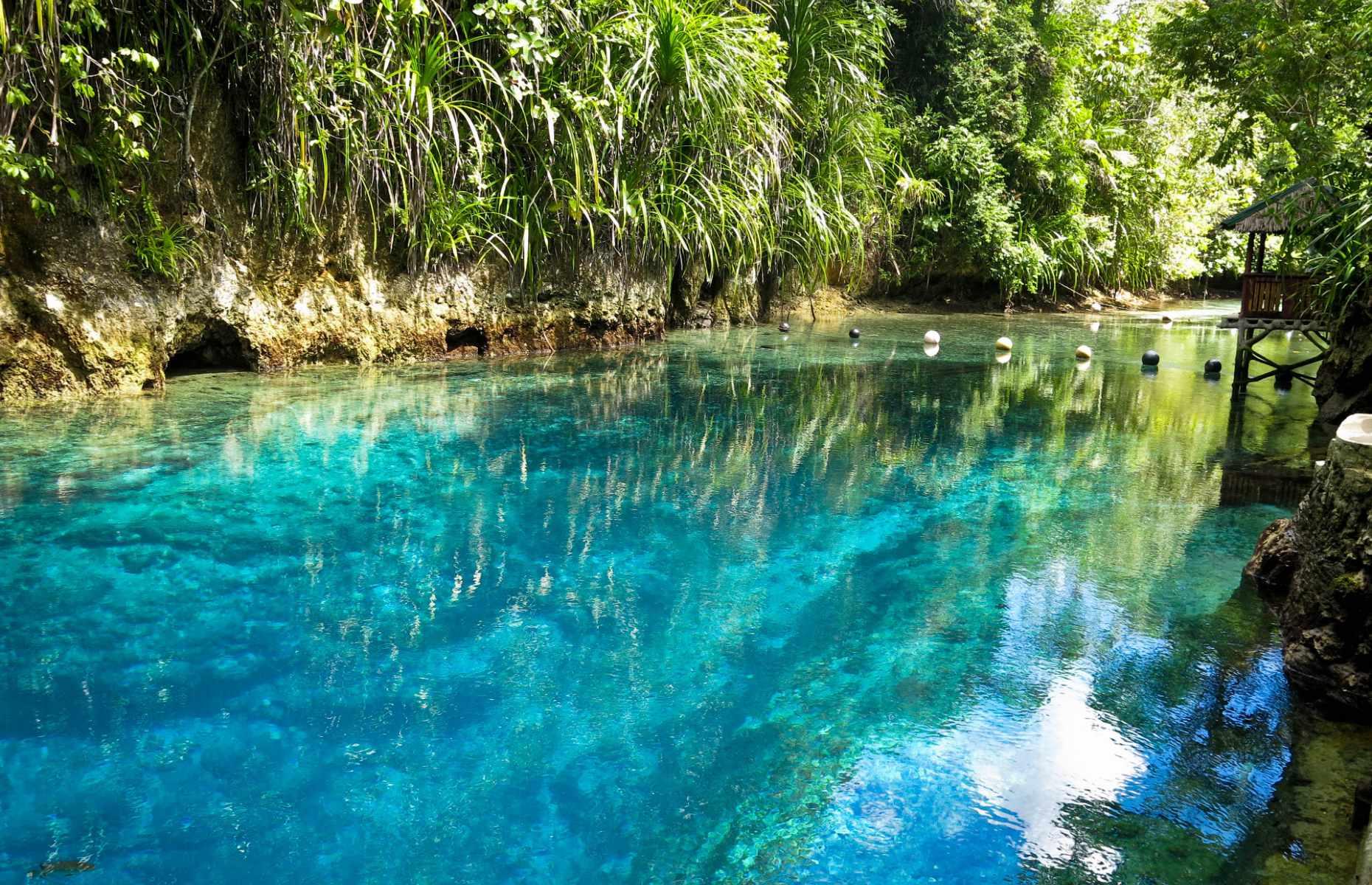
Enchanted River, Philippines
Enchanted by name and (apparently) enchanted by nature, this eye-popping blue river flows through an area of thick forest on the island of Mindanao in the Philippines. Local lore suggests the magical waters are inhabited by mythical creatures including engkanto (a kind of environmental spirit), and that sapphire and jade from fairies’ wands are responsible for its dramatic color. But the biggest mystery of all is that this saltwater river has no apparent source.
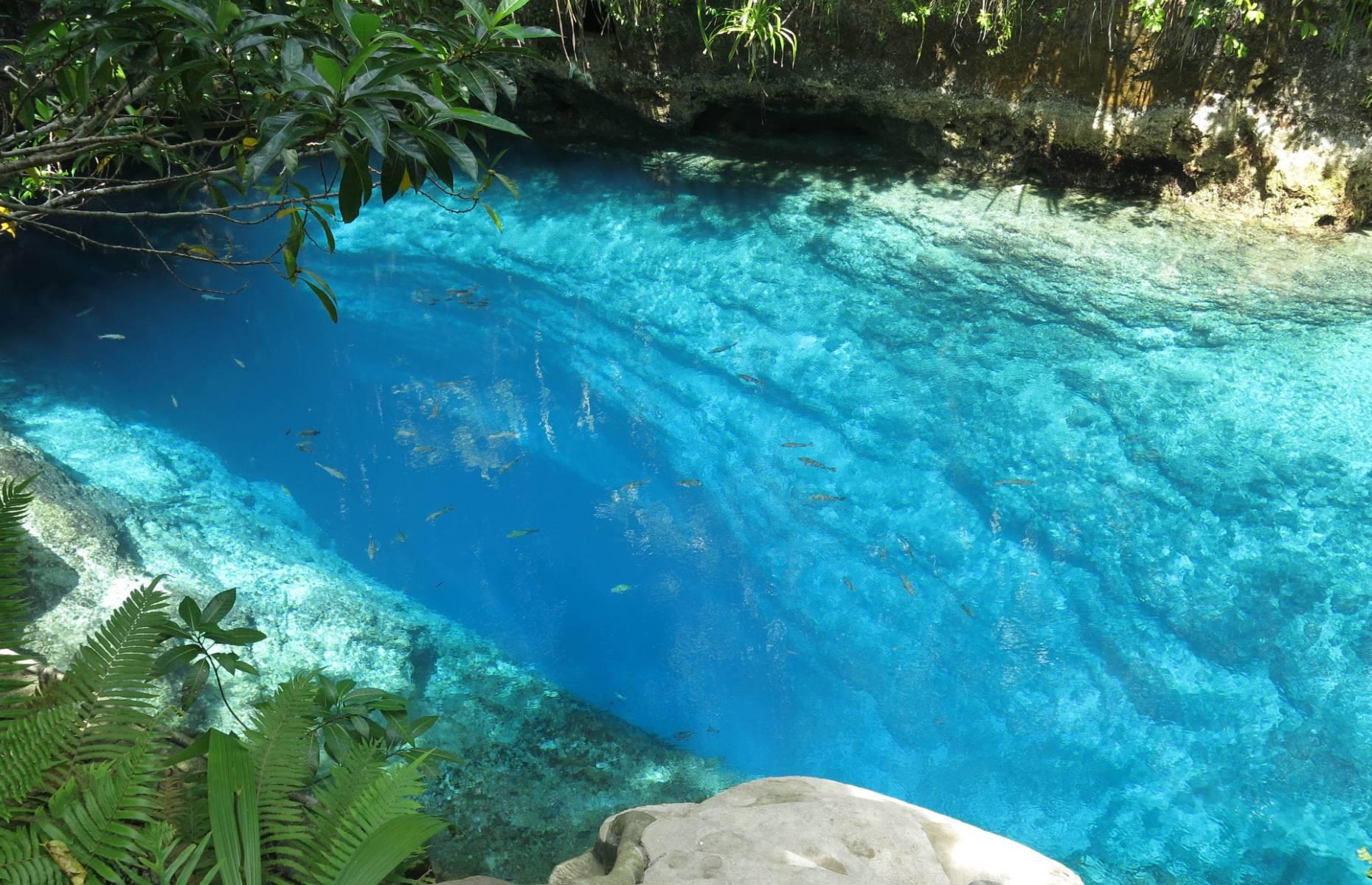
The most convincing theory is that it was formed by seawater flowing through underground caves and resurfacing here. In the late 1990s, Filipino cave diver Alex Santos went down there and found a system of caves, which are thought to filter the water and make it crystal clear. In 2014 another diver, Alfonso Amores, dived down in an attempt to uncover more of the river’s secrets. But he didn't resurface, and his body was discovered in an underwater cave around eight hours later. For now, the river’s precise source and formation remains shrouded in mystery.
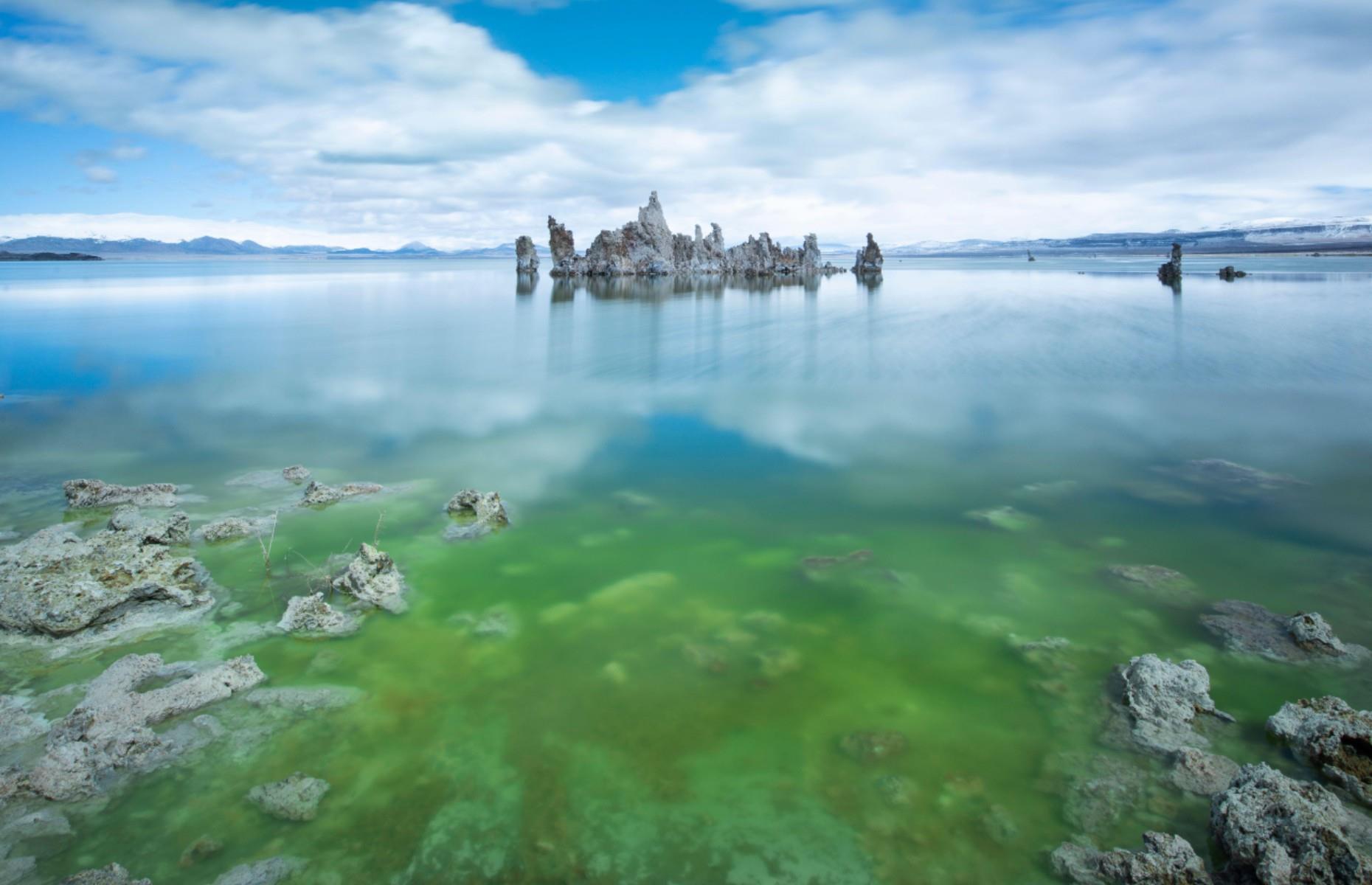
Mono Lake, California, USA
There are so many curiosities about California’s Mono Lake that it’s hard to know where to begin. For one, the 65-square-mile (168sq km) body of water is filled with hulking tufa towers which look like they've landed from Mars (they’re actually formed by underground springs). Another striking feature is its bright green hue. While it's know that this is a result of algal blooms, which reproduce due to the higher salt and alkaline levels that occur when the lake dries up, there’s still some mystery surrounding this process.

The green algae usually get their energy from photosynthesis, which requires sunlight. But scientists’ samples found algae even right at the bottom of the lake, where it’s almost completely dark. This suggests that the conditions of the lake are creating remarkably tolerant algae, which can produce oxygen without sunlight, although further studies are needed to confirm this. Adding to the list of weird things scientists have found at the lake, an ‘otherworldly’ species of worm with three sexes was recently discovered there.
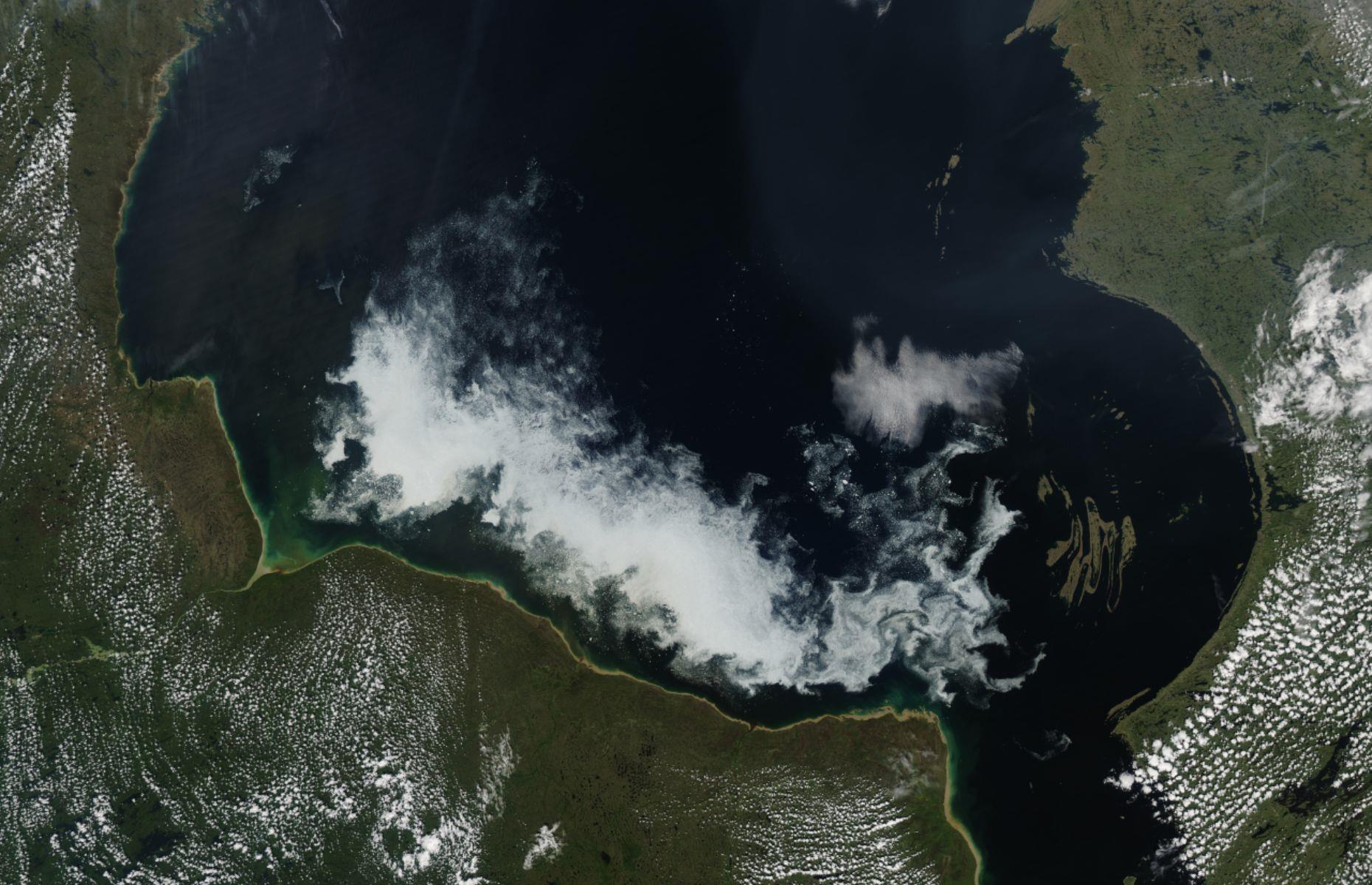
Nastapoka Arc, Quebec, Canada
Also known as the Hudson Bay Arc due to its location on the eastern edge of the inland sea, the Nastapoka Arc is a bizarre geological feature that no one quite understands. Seen from the skies, it resembles an almost perfect semi-circle, as if a giant cookie cutter were used to separate the land. The strange feature in northern Quebec was found by sailors on British ship Discovery, which drifted into the bay in 1611.
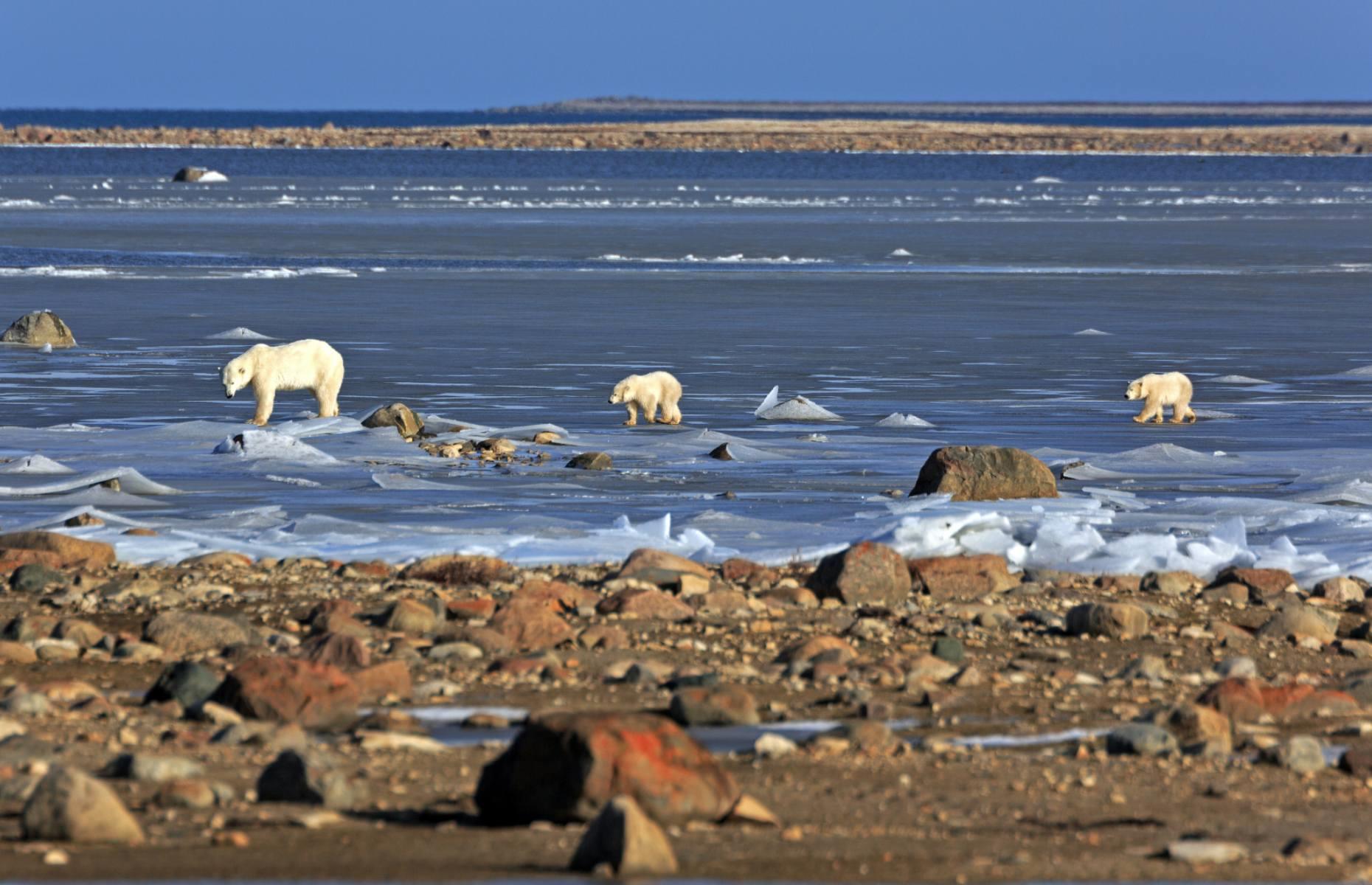
Amazed by the smoothness and regularity of the shape, scientists initially suspected Nastapoka Arc was formed by a meteor. But two American geophysicists, who traveled here in the 1970s to study the arc, found no evidence to support that theory. Today, the prevailing idea is that the bay is a tectonic boundary, created when one rock shelf was pressed under another.
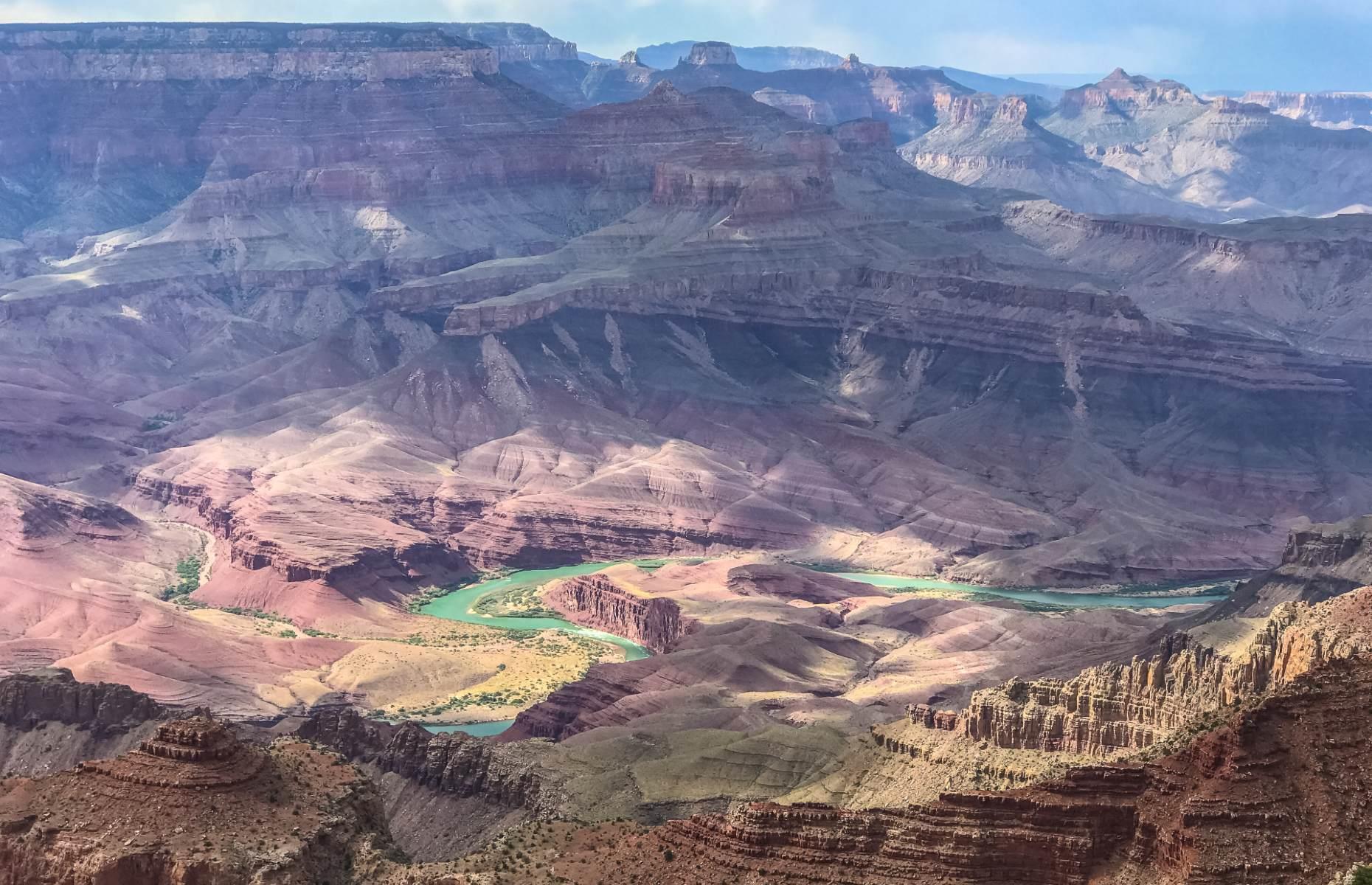
The Great Unconformity, Arizona, USA
Since the Grand Canyon is one of the most-visited places in the US, you’d think we know everything there is to know about it. But that isn’t strictly true. In fact, this stunning natural wonder is home (or, rather, not home) to a weird phenomenon known as the Great Unconformity: a gap in the layers of rock indicating an unaccounted-for period of 250 million-1.2 billion years. This geological gap has been found in other regions across the world but the reason for its presence is thought to vary from place to place.
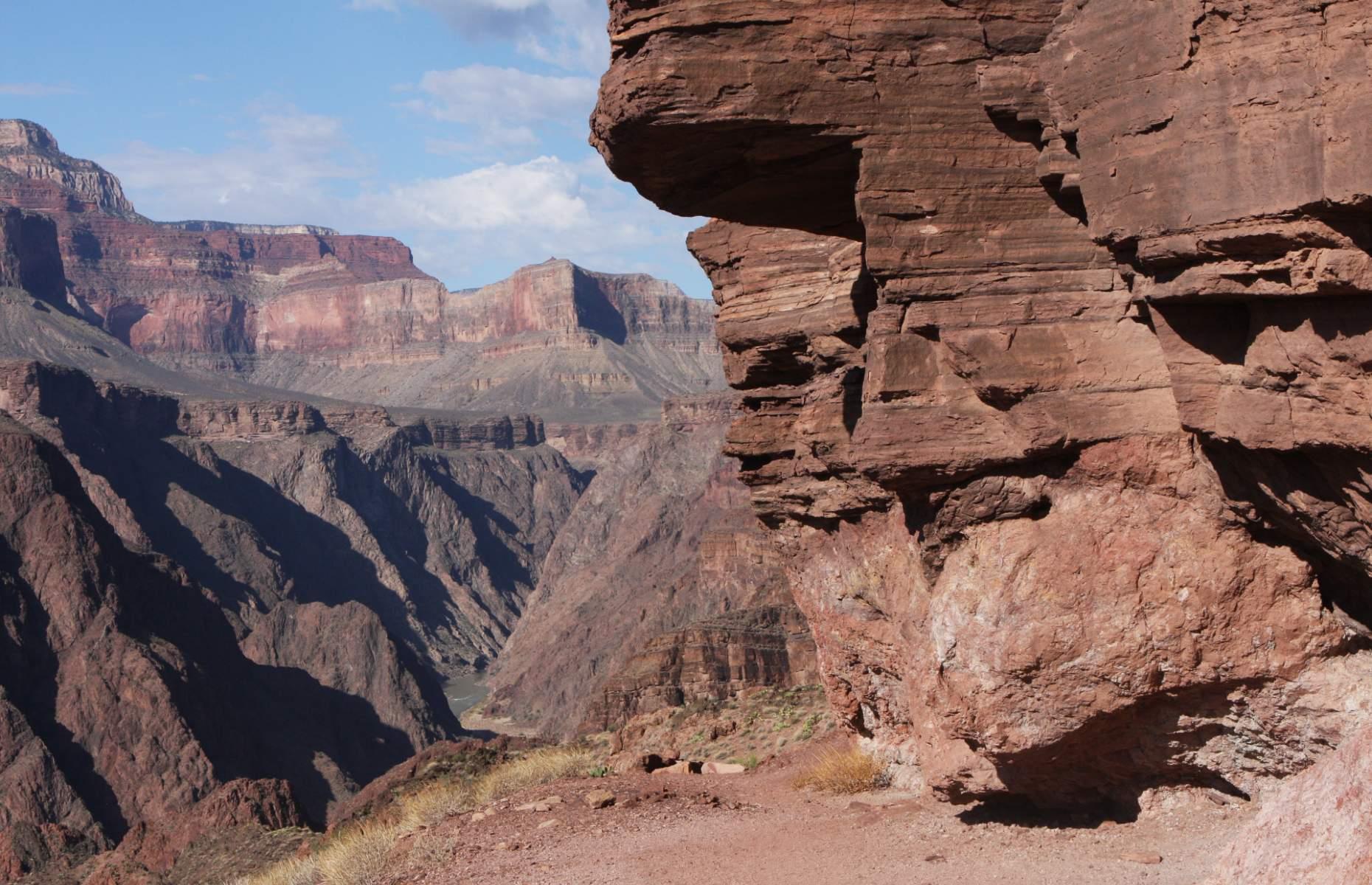
Scientists can be certain that there is a gap because of the large disparity between the ages of the rock layers around it. While it’s still unclear how exactly it came to be, researchers have put forward the theory that the rock layers were lost during a period of tectonic uplift, when the ancient supercontinent Rodinia broke apart some 750 million years ago. They suggest that this rifting created the faults in the rock we can see today. Researchers are also studying similar ‘unconformities’ across North America to find out what’s behind these mysterious periods in the planet’s history.
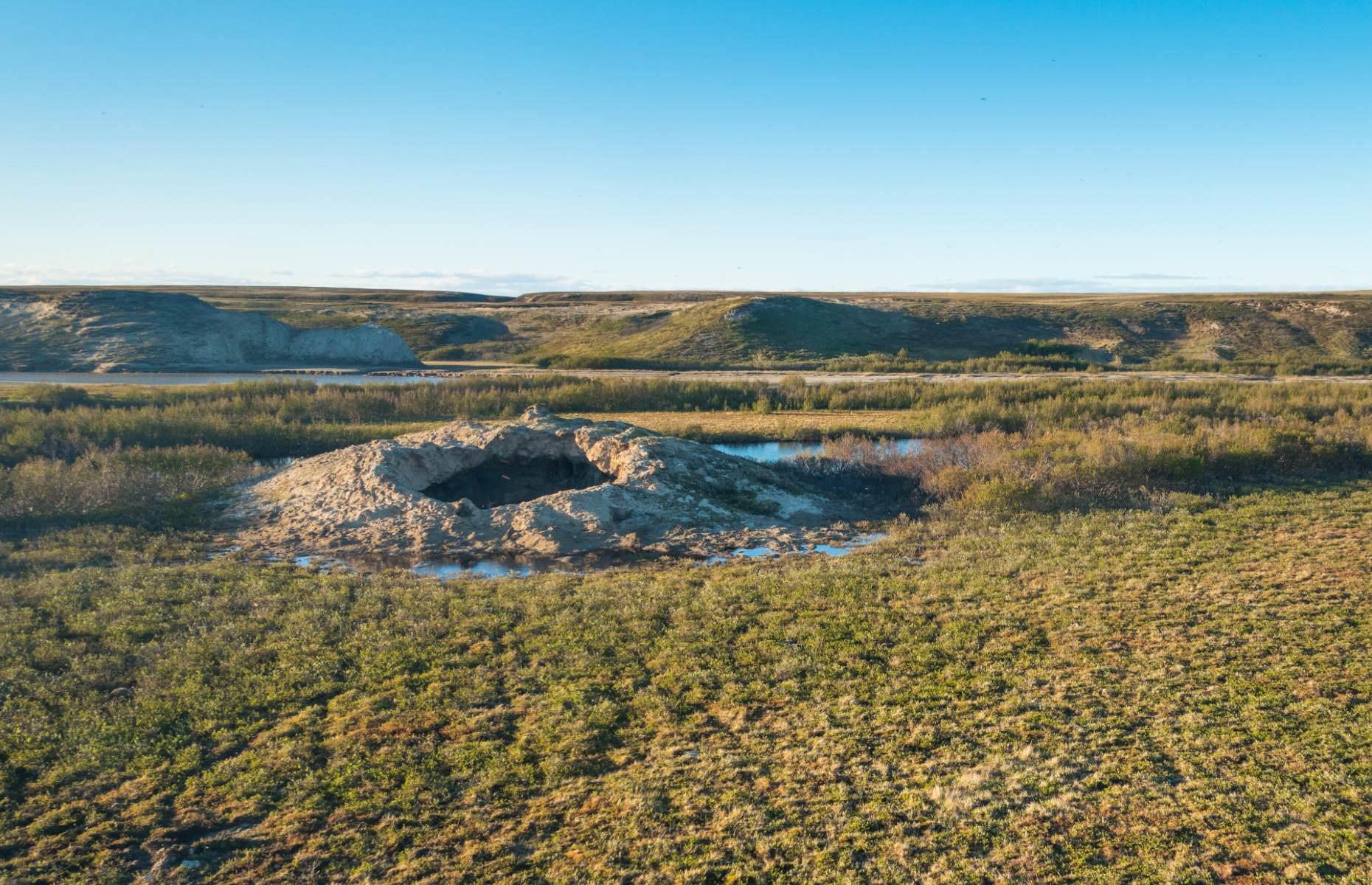
Yamal Craters, Russia
On a remote Siberian peninsula in the Arctic Circle are a series of enormous craters which are literally exploding into existence. The bizarre natural phenomenon which creates the holes, known as the Yamal Craters, was first observed by scientists in 2014. At the time, they said such a feature had never been seen before in permafrost (ground that remains frozen for more than two years). There are currently 17 such craters in the region in west-central Russia, all of which have come into being within a decade.
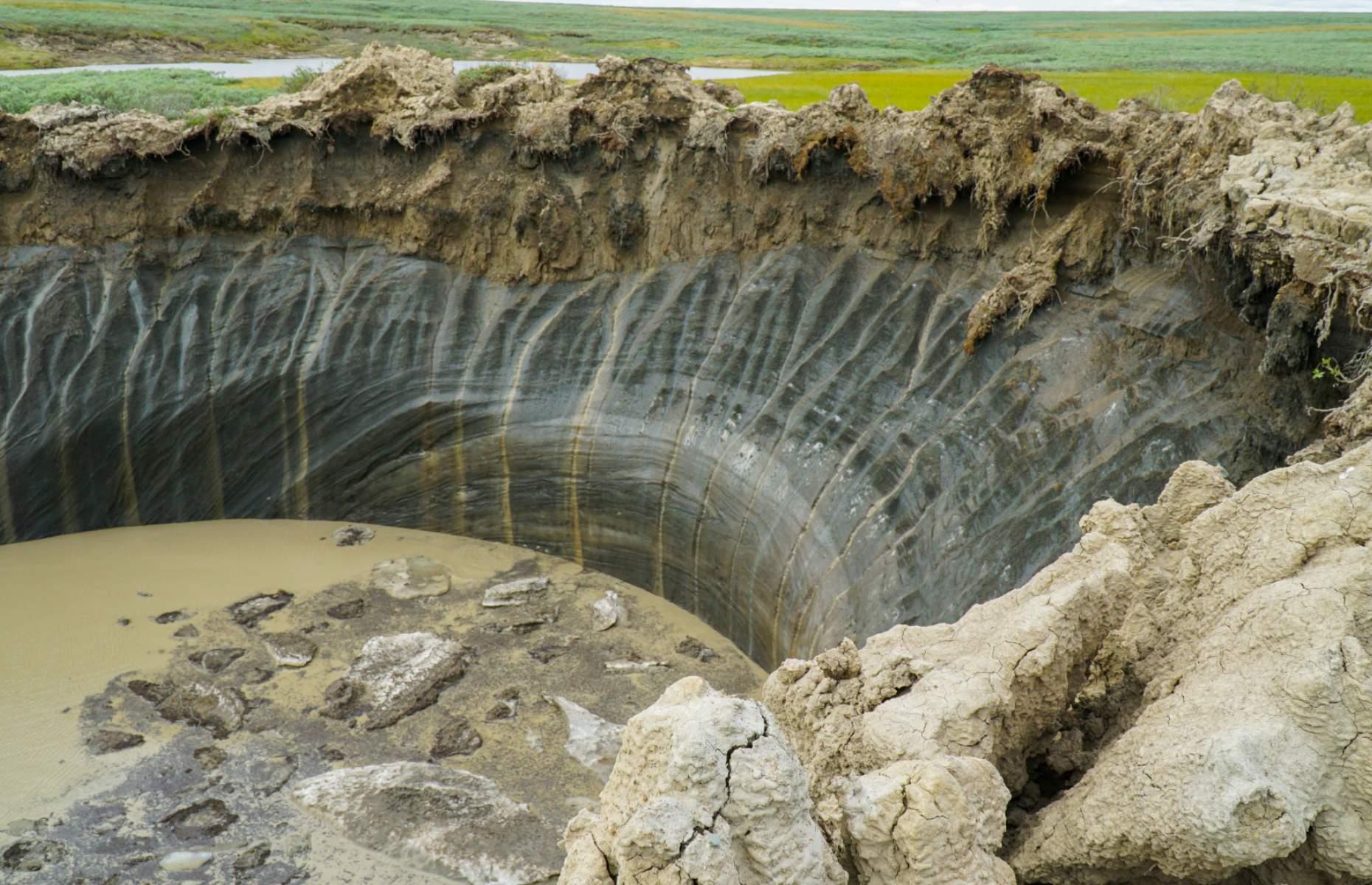
How the craters are formed largely remains a mystery. It’s widely speculated that climate change plays a role, as the rapid melting of permafrost has been responsible for many other drastic changes in the Arctic ecosystem. At the moment, researchers know that the explosions were caused by gas, which builds up under the tundra for several years before breaking apart the land. However, it’s still unclear where the gas comes from in the first place.
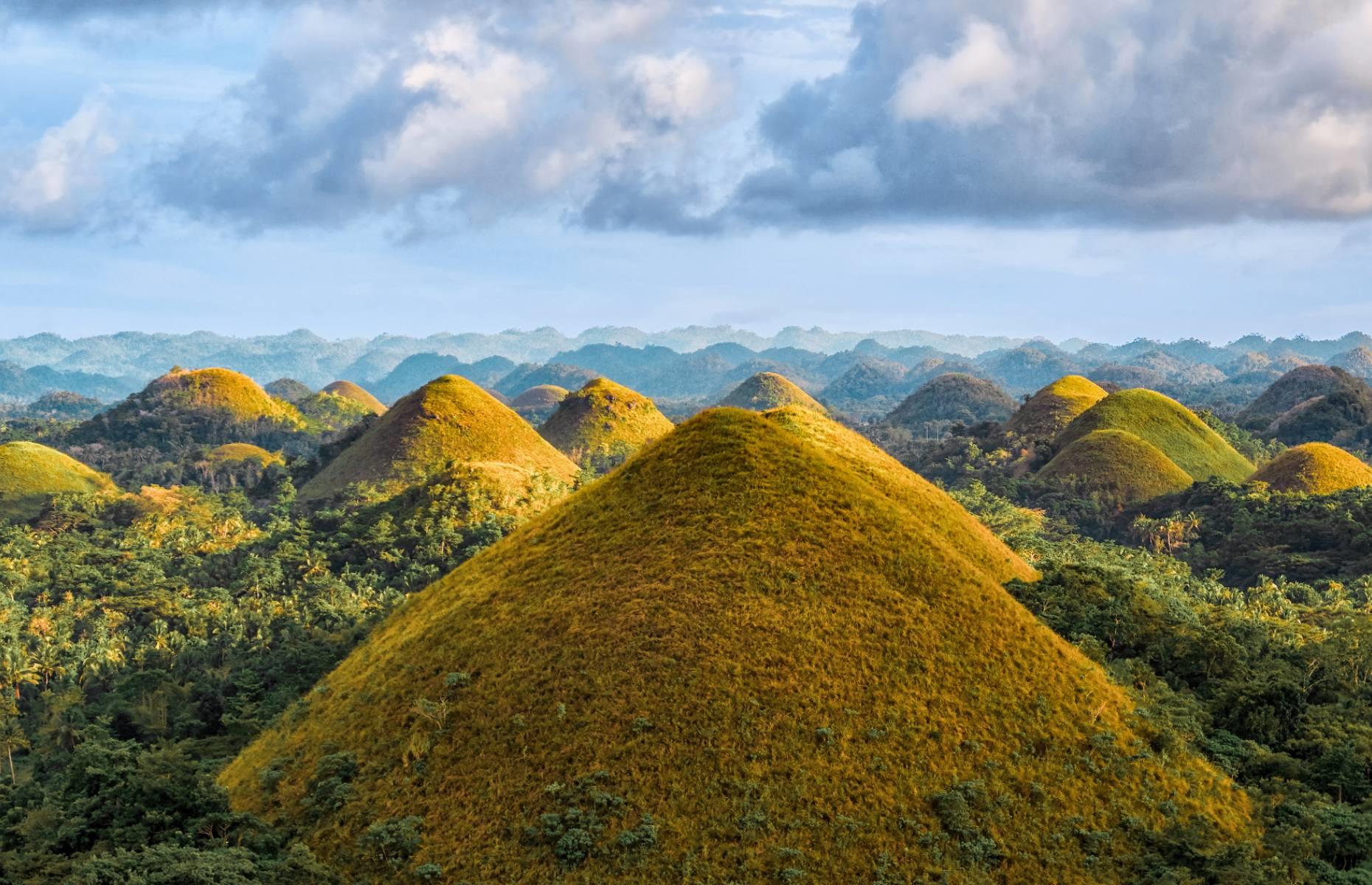
Chocolate Hills, Philippines
So-named because they resemble little mounds of chocolate in the dry season – when their grassy coverings go from verdant green to brown – these otherworldly hills have puzzled scientists for decades. The peaks, which spread across 19 square miles on the island of Bohol in the Philippines, vary in size but have strikingly similar and symmetrical shapes as if created in molds.
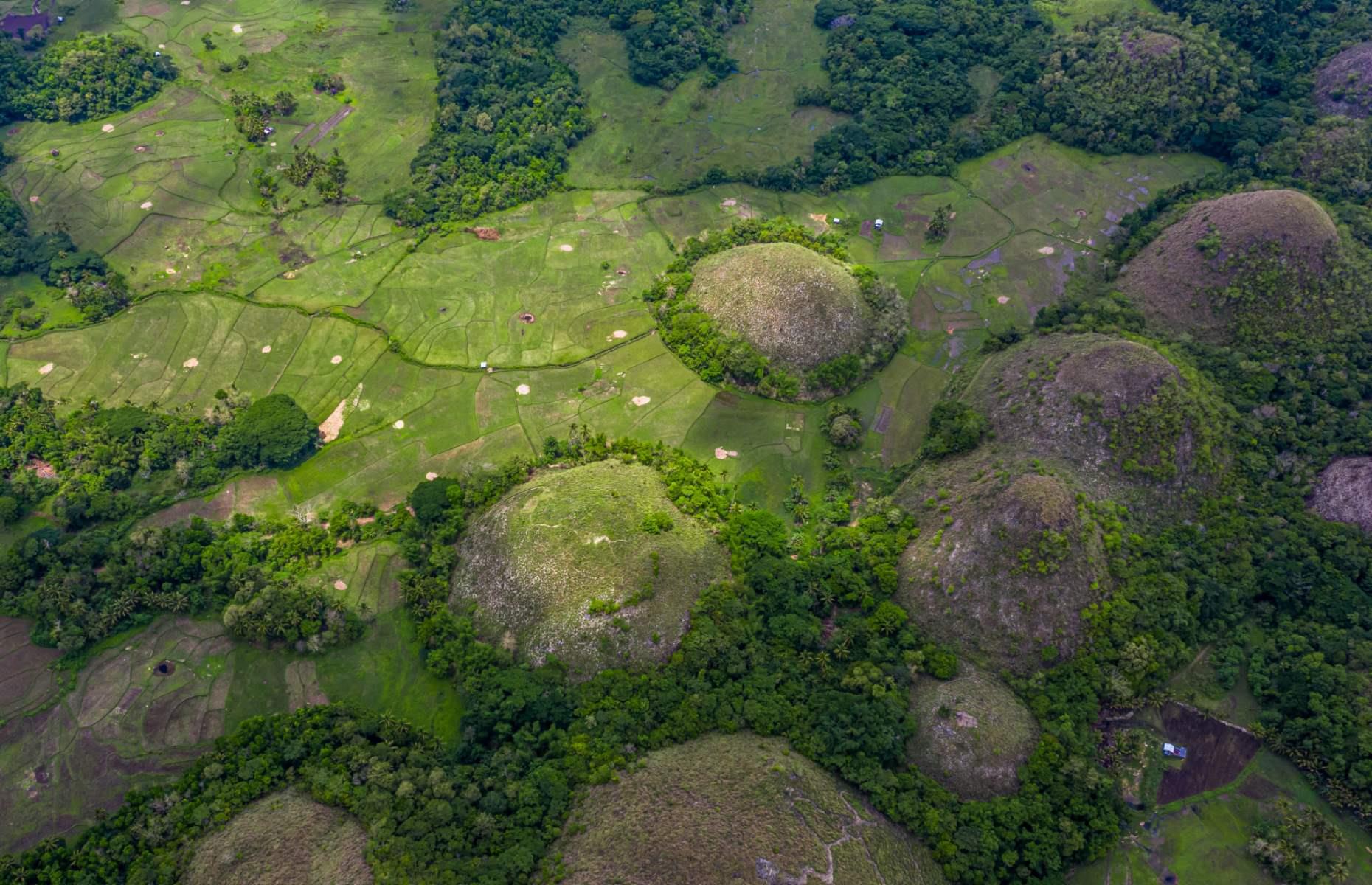
The most widely accepted hypothesis is that the hills were formed by the weathering of limestone. As tectonic plates shifted, the limestone was lifted above sea level and the hills were gradually sculpted by rain, wind and erosion. Another theory is that the hills are in fact former coral reefs, brought above sea level due to a geological shift. Myths and legends on the island provide plenty of other ideas, suggesting they were formed by the tears of a heartbroken giant – or that they were created when two battling giants threw rocks at each other.
Liked this? Click on the Follow button above for more great stories from loveEXPLORING
Want more myths and mysteries? Discover the most magical places on Earth
More for You
Average net worth of Americans by age — see how you compare
America’s presidential debate boss thinks Biden upended tradition … and duped Trump
14 High-Protein Zucchini Dinners in 30 Minutes
15 Unspoken Rules Inmates Have To Follow in Prison
These Are The Super-Strong Muscular Dog Breeds
“Big Misunderstanding:” Scottie Scheffler describes surreal PGA Championship round
6 Things You Should Never, Ever Buy at Costco
Donald Trump's Chances of Flipping Minnesota, According to Polls
6 Frugal Habits Suze Orman Swears By
Ripped Off Again: 10 Companies That Have A Habit of Ripping Consumers Off
Walmart Selling Popular Bedroom Items on Clearance for As Low As $1
Martha Stewart’s Trick for Perfectly Crispy Bacon Every Single Time
Colt revolver from Battle of Little Bighorn and WWII battle tank are top guns at Texas firearms auction
How to get pool water out of your ear: 12 easy ways to drain fluid from your ears at home
Crimea Satellite Images Show Aftermath of 'Massive' ATACMS Strike
17 Smartest Dog Breeds
LPGA: Rose Zhang not alone; multiple players withdraw from Liberty National event
Pumpkin Roll
The Best Poison Pokémon of All Time Ranked
Mike Pompeo warns 'something doesn't sound right' about attempted Quantico breach

IMAGES
VIDEO
COMMENTS
During your trip to Namibia: ensure that your personal belongings, including your passport and your other travel documents, are secure at all times. avoid showing signs of affluence or wearing expensive jewellery. avoid carrying large sums of cash or unnecessary valuables.
The Government of Canada's official source of travel information and advice, the Travel Advice and Advisories help you to make informed decisions and travel safely while you are outside Canada. ... namibia Namibia: Exercise a high degree of caution. 2024-05-14 11:51:04: nauru Nauru: Take normal security precautions. 2024-05-06 10:24:04: nepal ...
Call us in Washington, D.C. at 1-888-407-4747 (toll-free in the United States and Canada) or 1-202-501-4444 (from all other countries) from 8:00 a.m. to 8:00 p.m., Eastern Standard Time, Monday through Friday (except U.S. federal holidays). See the State Department's travel website for the Worldwide Caution and Travel Advisories.
Restaurants in Namibia are open. Bars in Namibia are . Find continuously updated travel restrictions for Namibia such as border, vaccination, COVID-19 testing, and quarantine requirements.
Safety and security Border with Angola. Peace in Angola has improved the security situation along the Namibia-Angola border. Due to the risk of banditry, however, you should exercise caution when travelling to this area, including Kavango Region in the northeast and the western half of Zambezi Region (formerly known as Caprivi).
Travellers to Namibia can travel with mobile equipment and access the GSM network at all towns and on most portions of the national highway. International roaming agreements are in place with 146 countries through 334 network partners. Most accommodation establishments in Namibia offer Wi-Fi to their guests.
Recommended Travel Vaccinations for Namibia: VACCINE HOW DISEASE SPREADS DETAILS; COVID-19: Airborne: Recommended for all travellers: Hepatitis A: Food & Water: Recommended for most travellers: ... High Commission of Canada in South Africa 1103 Arcadia Street Hatfield, Pretoria, 0083, South Africa Telephone: +27 12 422 3000.
Canada and Namibia. Services for Canadians if you're visiting, studying, working or doing business in Namibia. Includes information about coming to Canada. Travel advice and advisories - Namibia. Exercise a high degree of caution. Travel advice, passport and entry requirements, health and safety information, and more.
Canadian citizens do not need a tourist visa when travelling to Namibia in 2024. Canadian passport holders can stay in Namibia for a short period of time (for 90 days). Please, read all the information below to make your trip easy and safe. Don't rely on information from only one source. Please, with at least one more source listed in the link.
Namibia travel tip | Visit Namibia during June, July or August for the best weather and wildlife experiences -#4 THE DISTANCES ARE VAST AND YOU SHOULD TRAVEL NAMIBIA SLOWLY. Travel in Namibia is truly unlike travel anywhere else on earth. Known as the land of endless horizons, the vast distances and epic landscapes of this country will leave ...
Protect Your Electronics. Pack up any electronics well before you arrive in Namibia. The dry air and dust really seep their way into the crevices of laptops and camera equipment. Thankfully, Cameron and I both keep our MacBook's protected with a heavy-duty laptop sleeve and protected our keyboards with a cover.
Restricted to travellers 18 years and over. All of the following: 200 cigarettes; 50 cigars; 200 grams of manufactured tobacco; and 200 tobacco sticks. Note: in order to qualify for a personal exemption on tobacco, all packages must be stamped "duty paid Canada droit acquitté".
Explore Namibia on this epic, 10-day self drive trip. Highlights include the Namib, an ancient desert with towering dunes, dramatic mountains and colonial architecture at the waterfront. Additionally, you will visit the Himba people, discover Etosha National Park and more. view trip ⤍. 14 days / from 6616 USD.
Rome2Rio makes travelling from Canada to Namibia easy. Rome2Rio is a door-to-door travel information and booking engine, helping you get to and from any location in the world. Find all the transport options for your trip from Canada to Namibia right here.
Find continuously updated travel restrictions for Namibia such as border, vaccination, COVID-19 testing, and quarantine requirements.
Transfers and game drives in Namibia are usually conducted in open-sided 4X4 vehicles. The country's good infrastructure means that many visitors to Namibia hire a car for a self-drive holiday which makes for independent, flexible travel within the ambit of a pre-planned itinerary. Self-drivers staying at private reserves join the other ...
Travel Advisory. November 27, 2023. Namibia - Level 2: Exercise Increased Caution. C. Last Update: Reissued with updates to crime. Exercise increased caution in Namibia due to crime. Country Summary: Petty crime, such as pickpocketing, purse snatching, and "smash-and-grab" attacks on vehicles, is increasingly common, and these can violently ...
The cheapest ticket to Namibia from Canada found in the last 72 hours was C$ 1,505. The most popular route is Montreal Pierre Elliott Trudeau Intl to Windhoek Hosea Kutako Intl and the cheapest round-trip airline ticket found on this route in the last 72 hours was C$ 1,590.
If your travel plans in Namibia include outdoor activities, take these steps to stay safe and healthy during your trip. Stay alert to changing weather conditions and adjust your plans if conditions become unsafe. Prepare for activities by wearing the right clothes and packing protective items, such as bug spray, sunscreen, and a basic first aid ...
Use Advance Declaration in ArriveCAN to submit your customs and immigration declaration before flying into Canada. Government of Canada's official one-stop-shop for comprehensive international travel information.
Passport validity requirements. To enter Namibia, your passport must have an 'expiry date' at least 6 months after the date you arrive. It must also have at least one blank page. If you're ...
Rome2Rio makes travelling from Namibia to Canada easy. Rome2Rio is a door-to-door travel information and booking engine, helping you get to and from any location in the world. Find all the transport options for your trip from Namibia to Canada right here.
From a perfectly semi-circular lakeshore in Canada to a polka-dotted patch of earth in Namibia and a bright blue spring in France with no apparent origin, these beguiling natural wonders remain ...